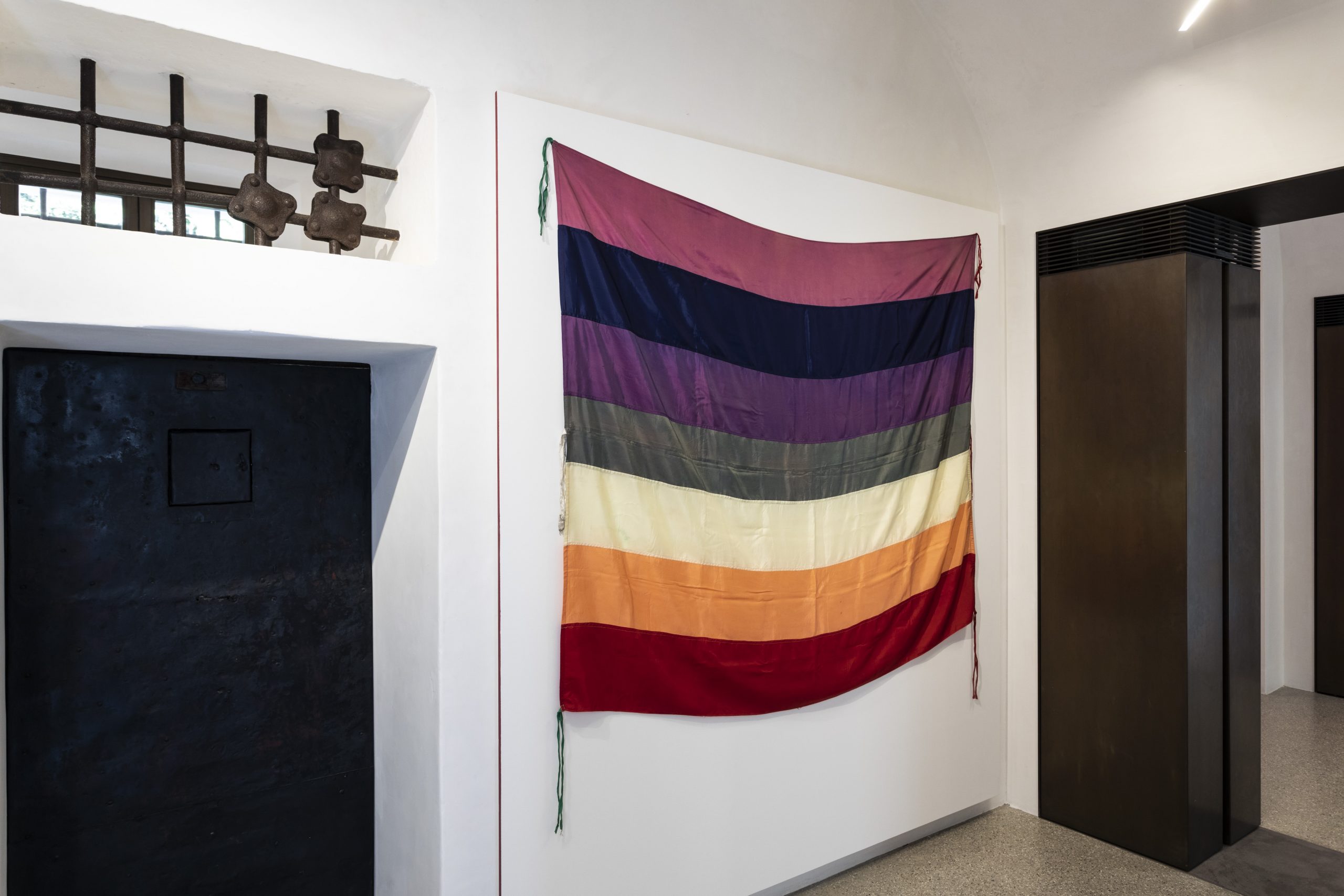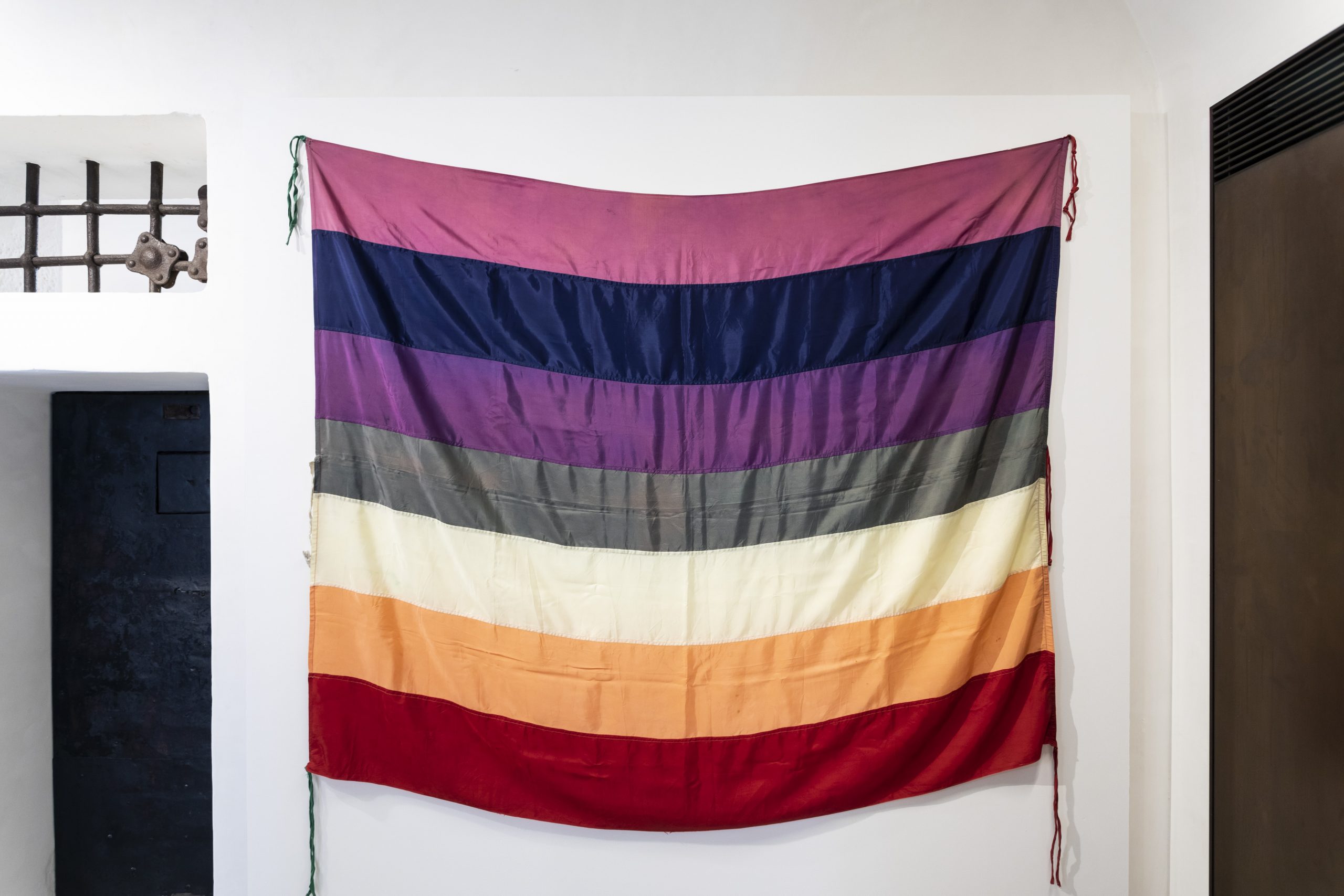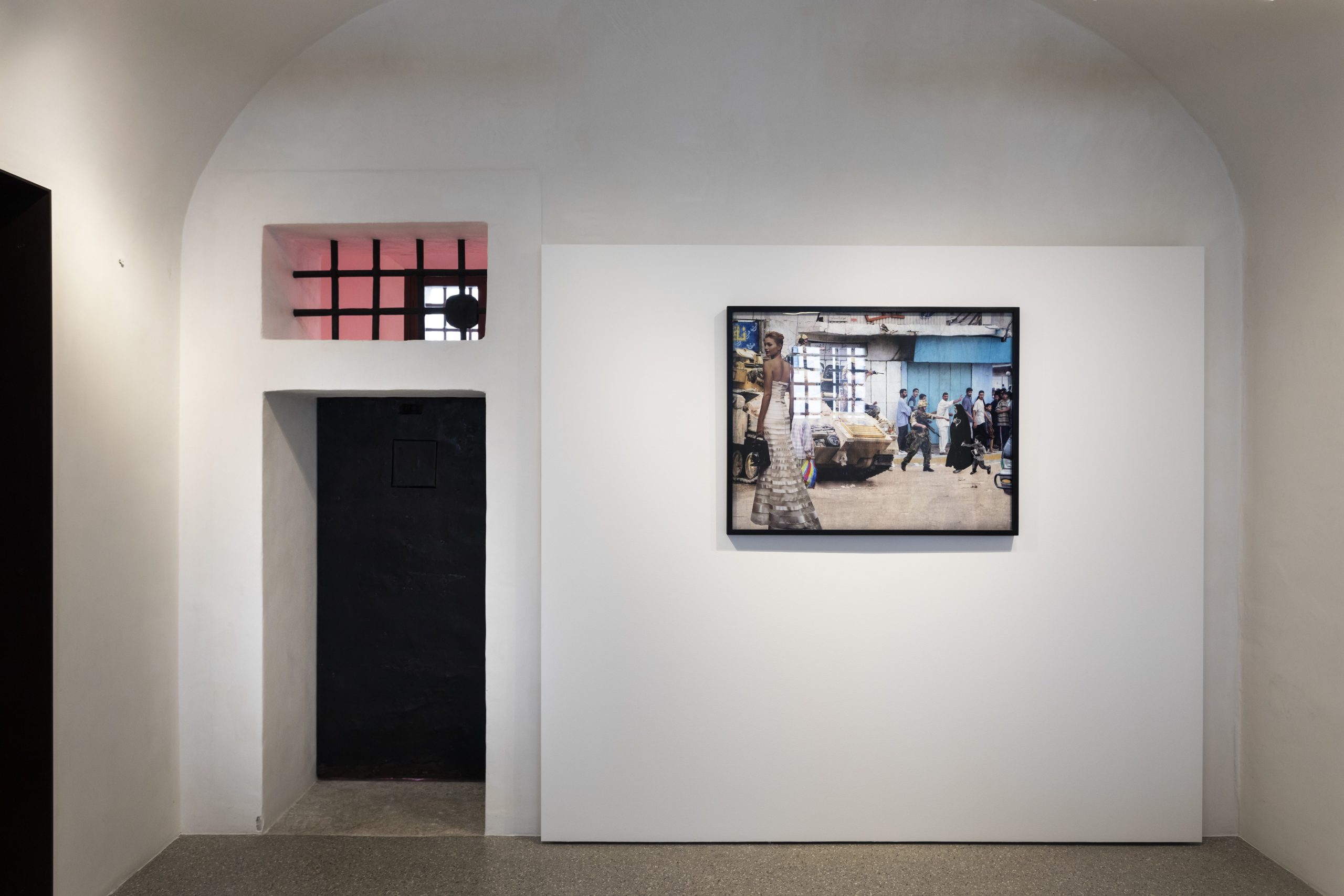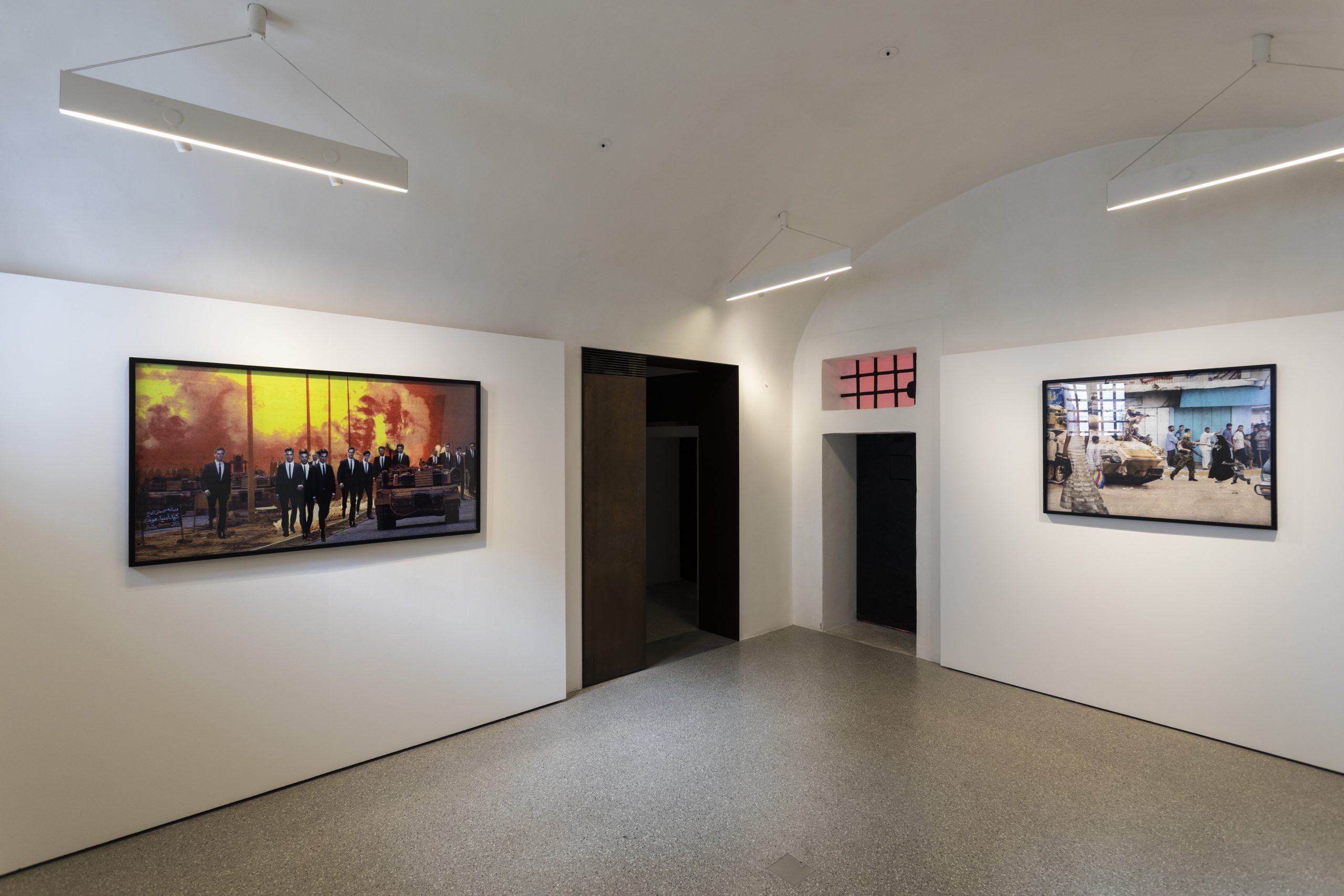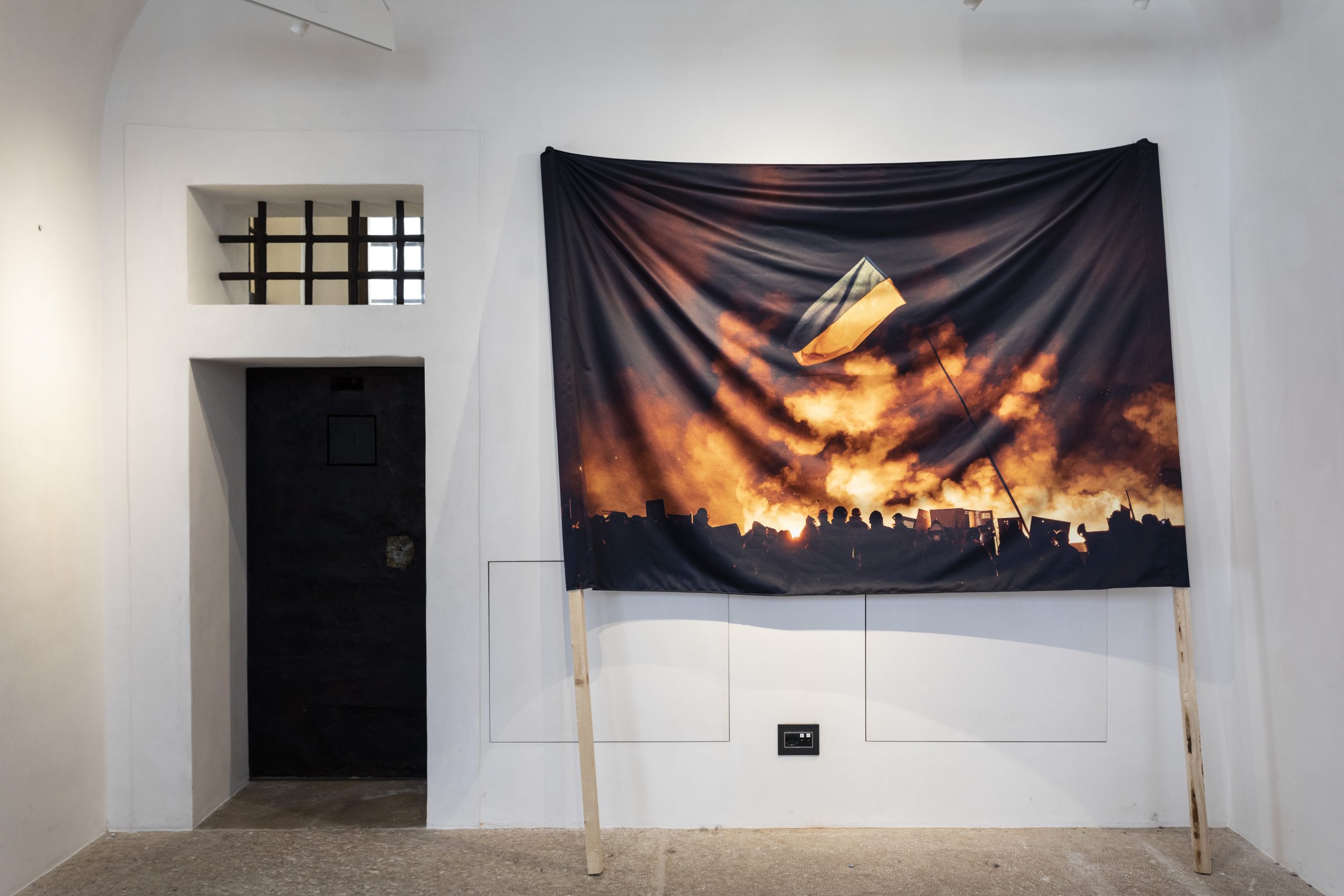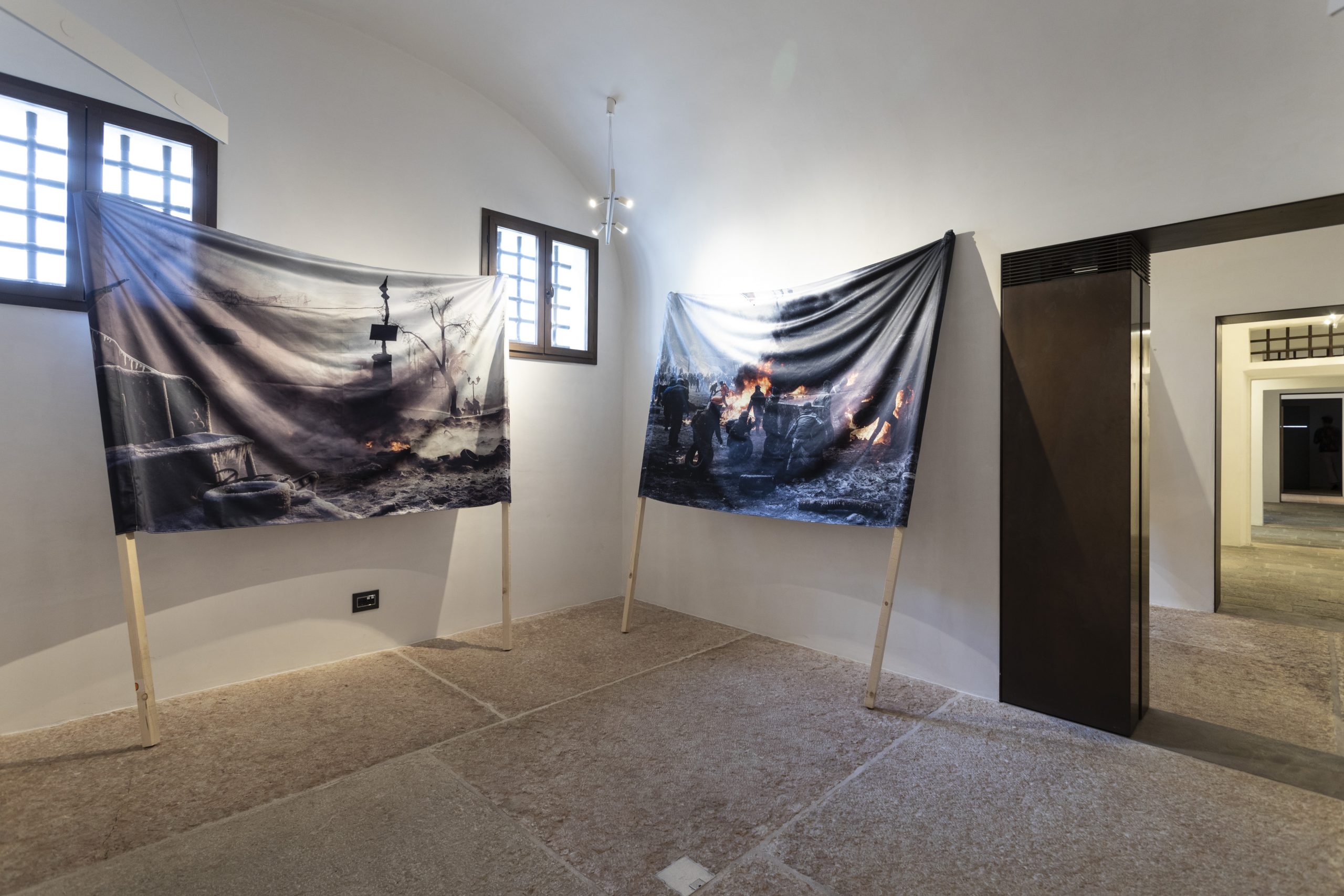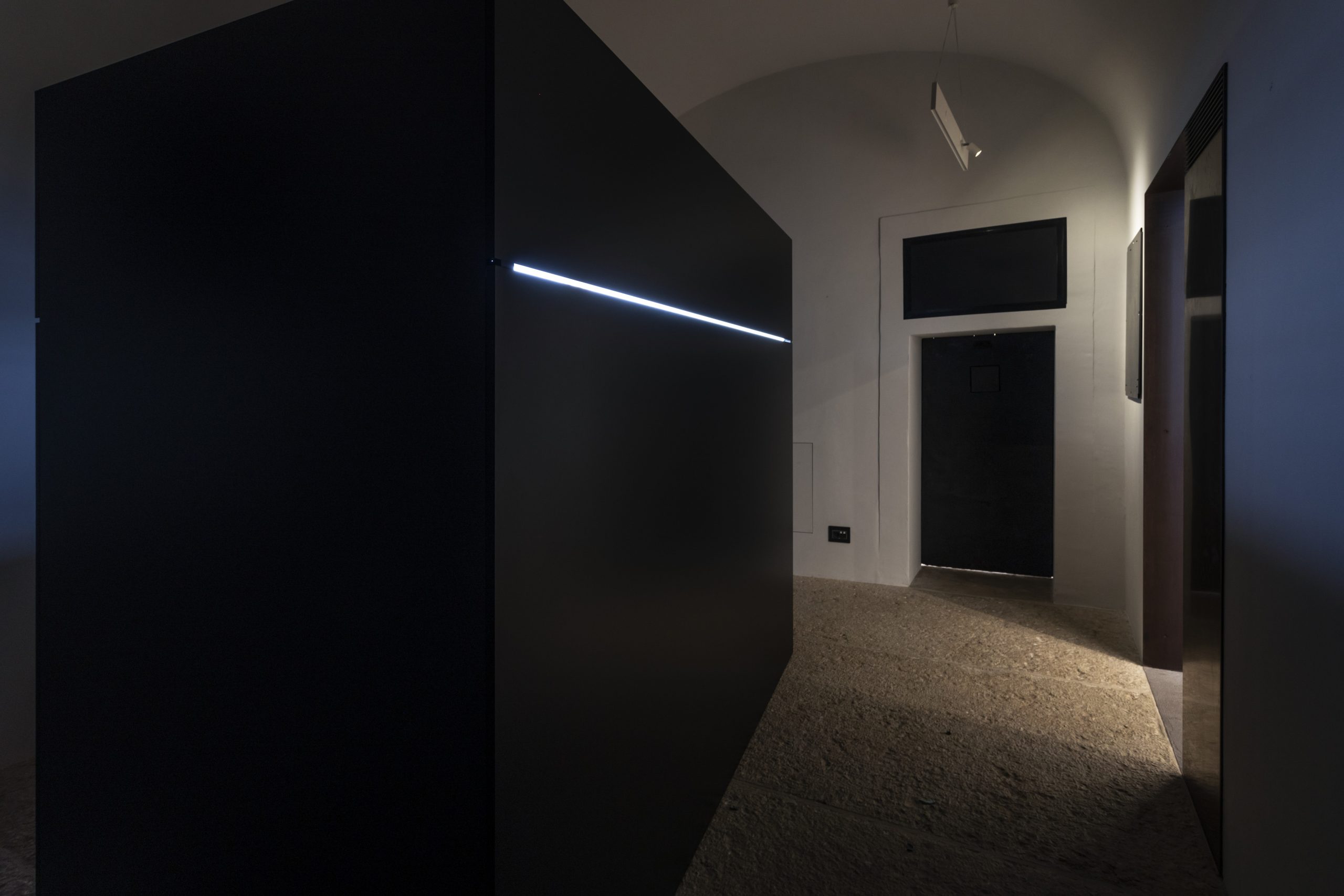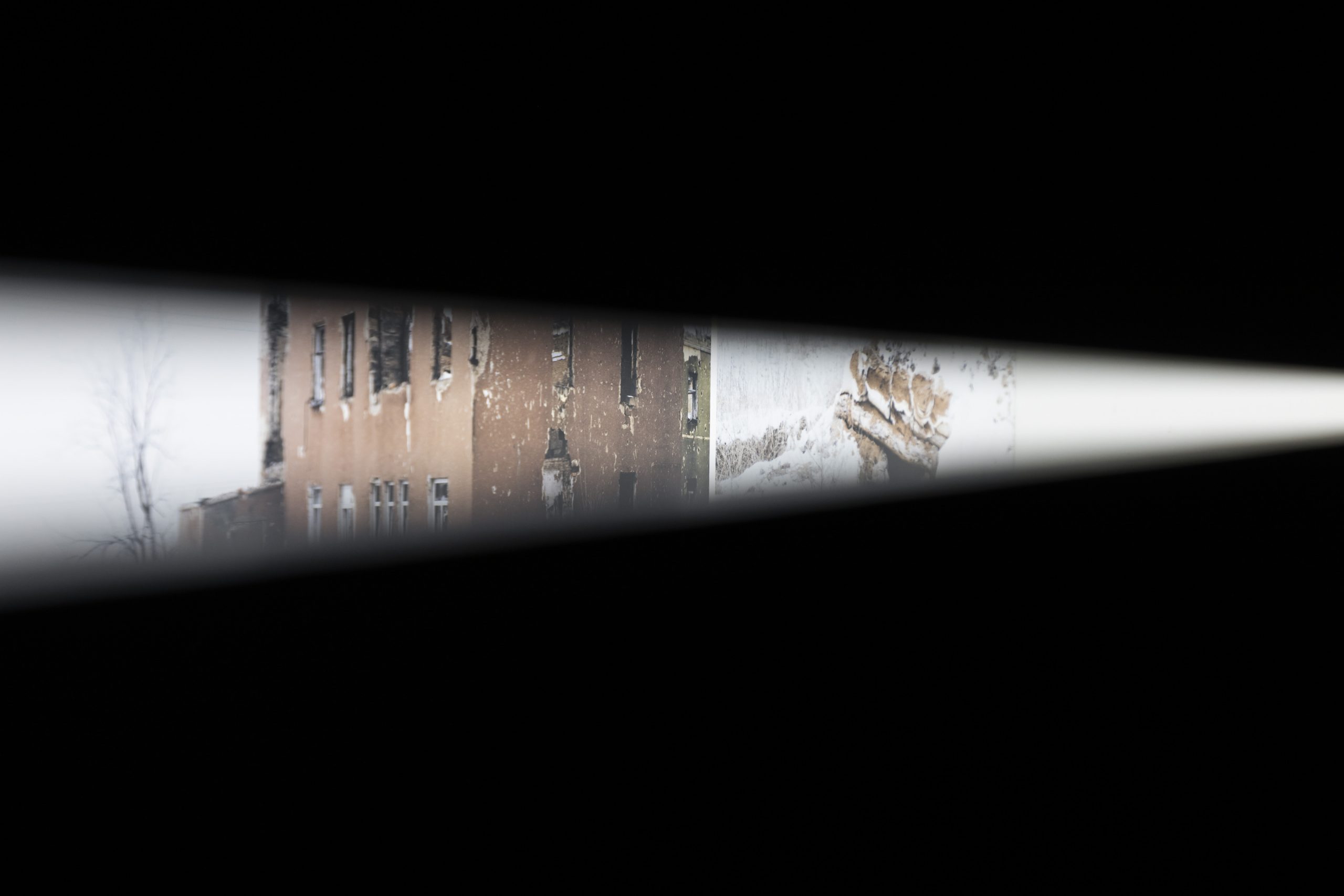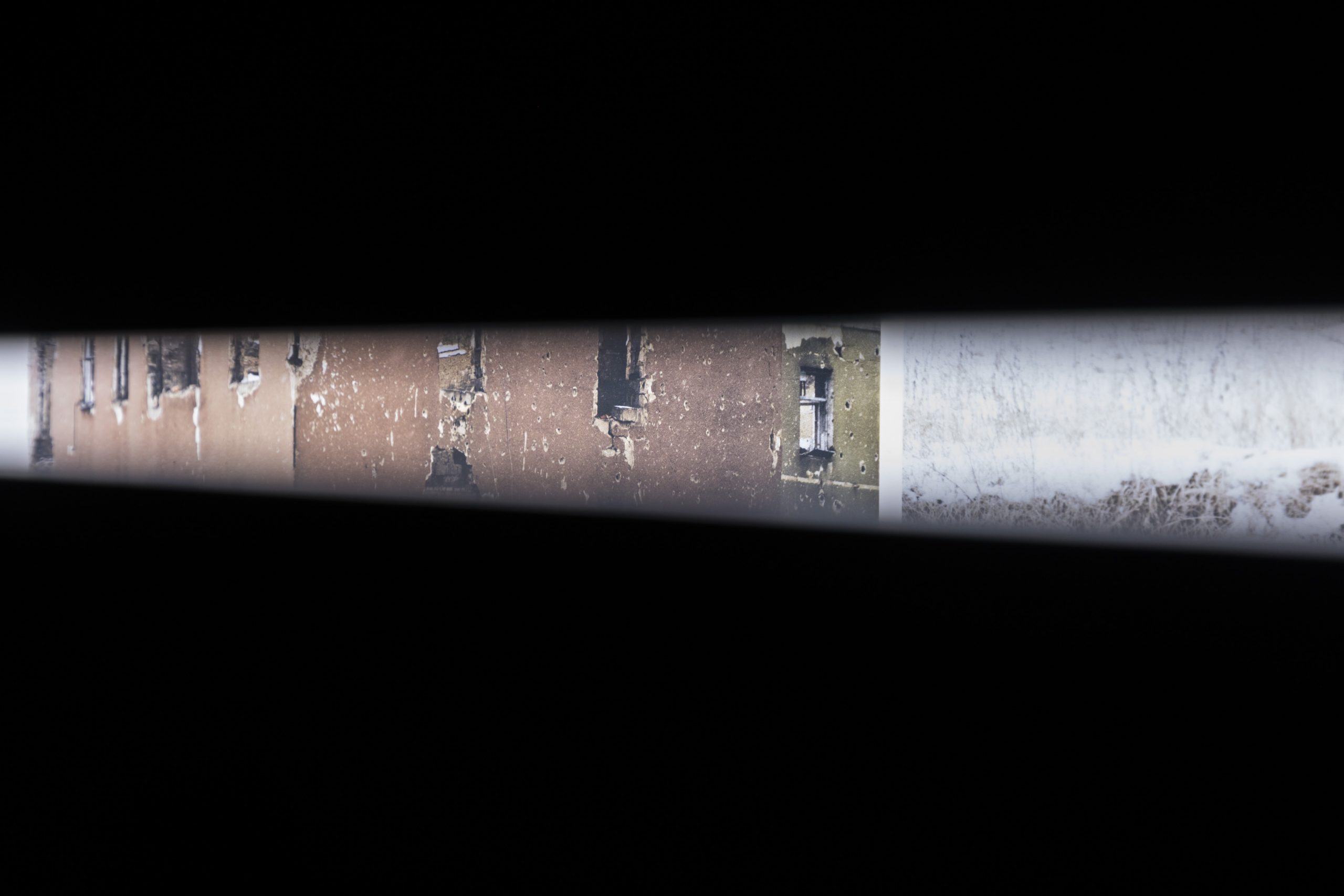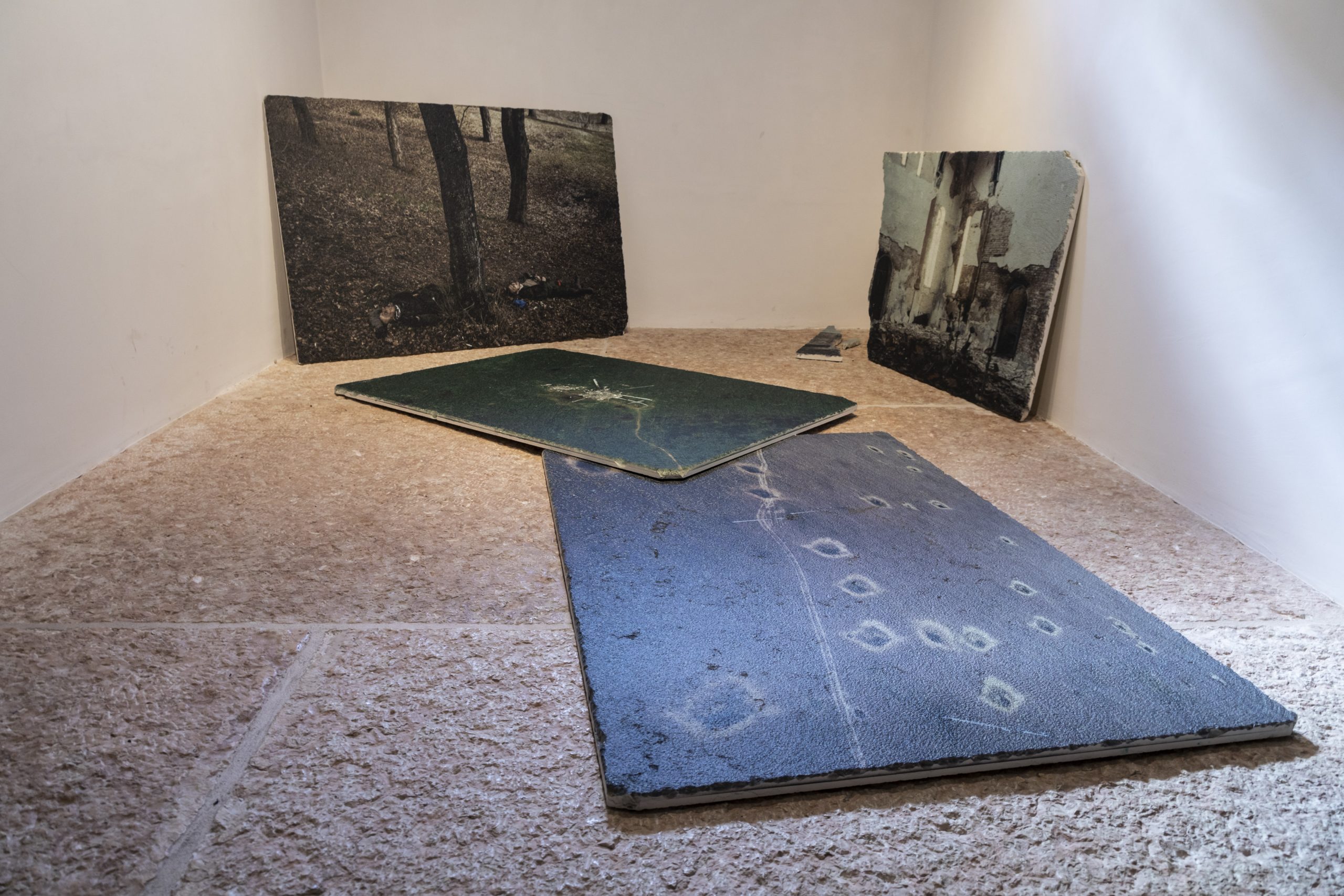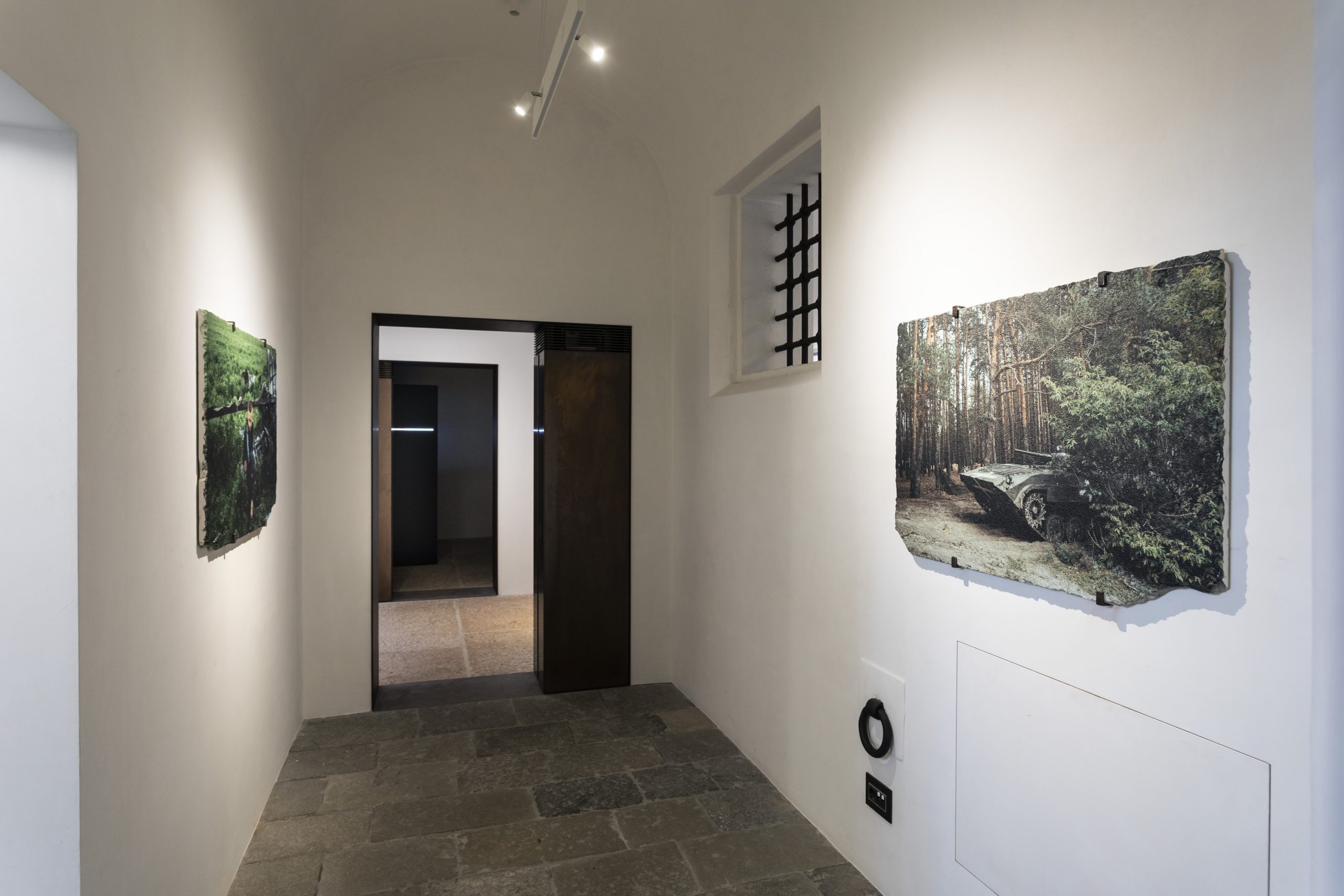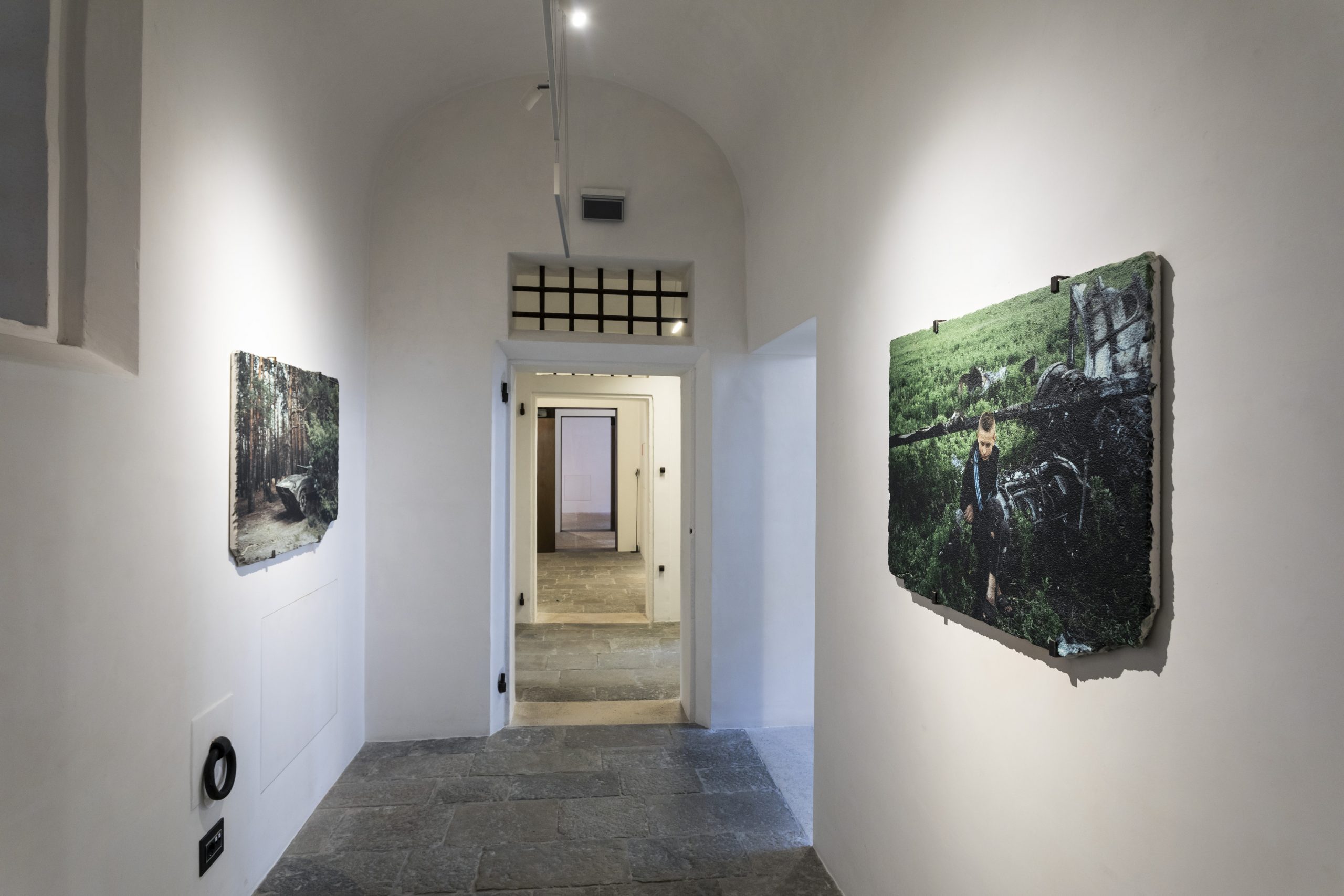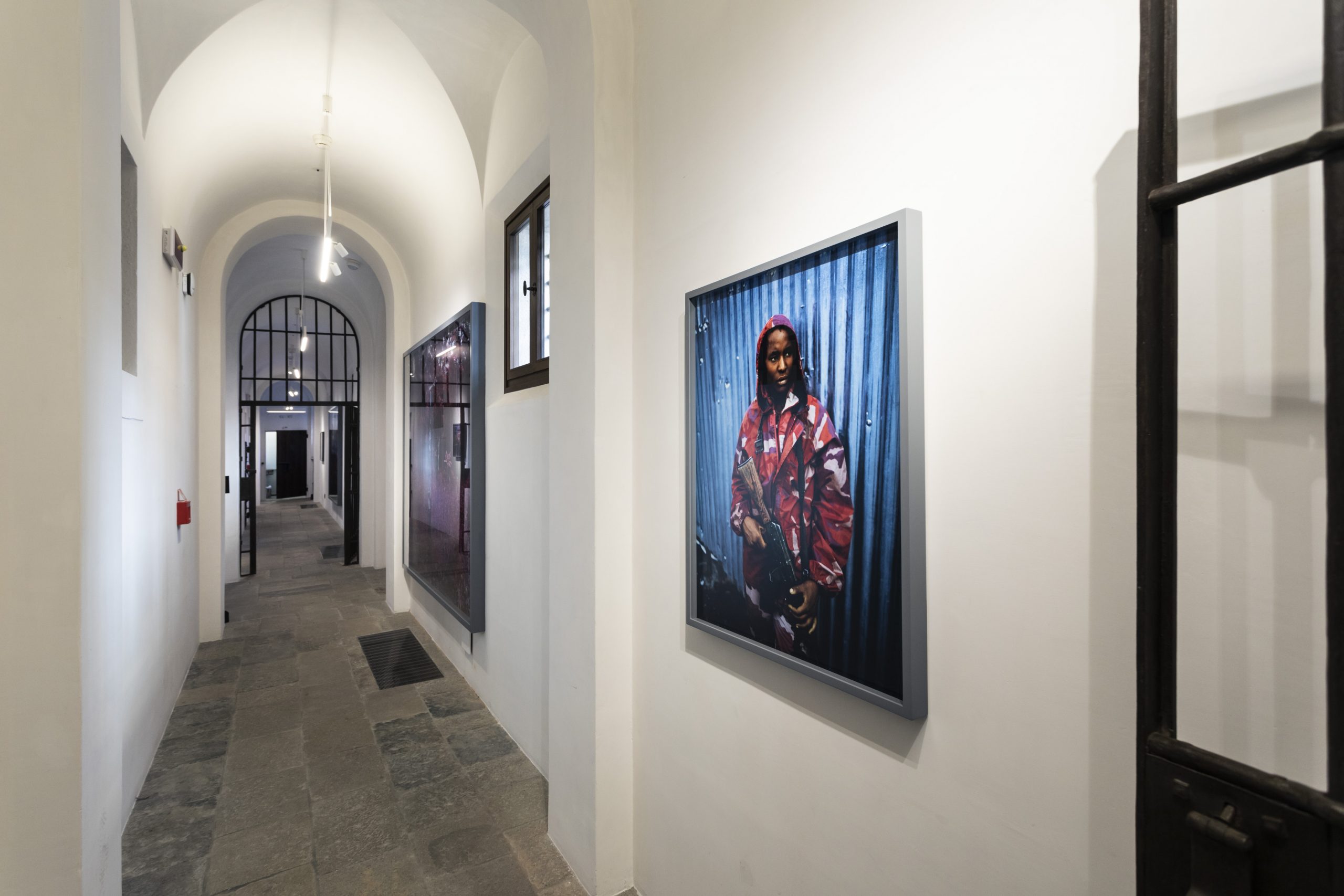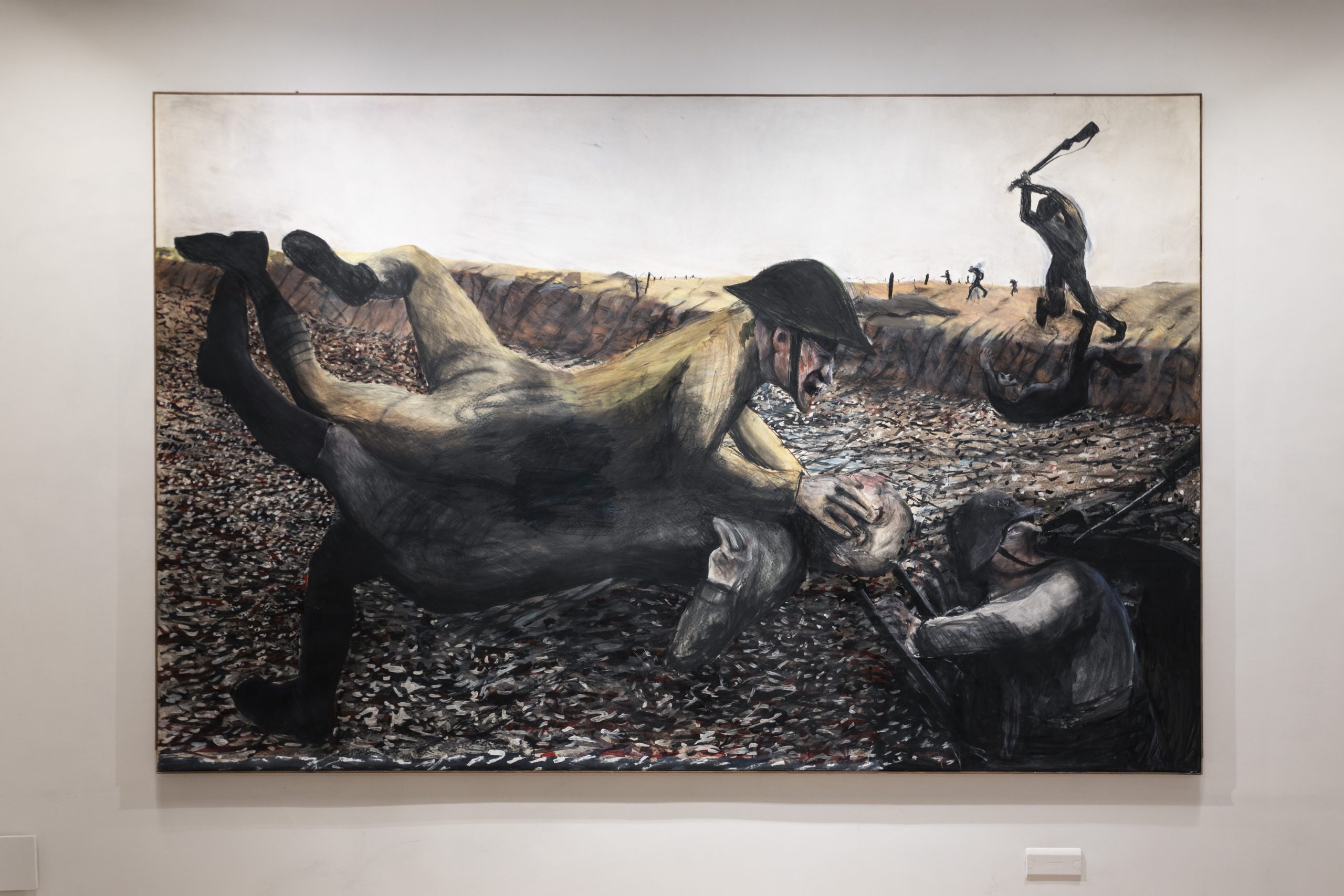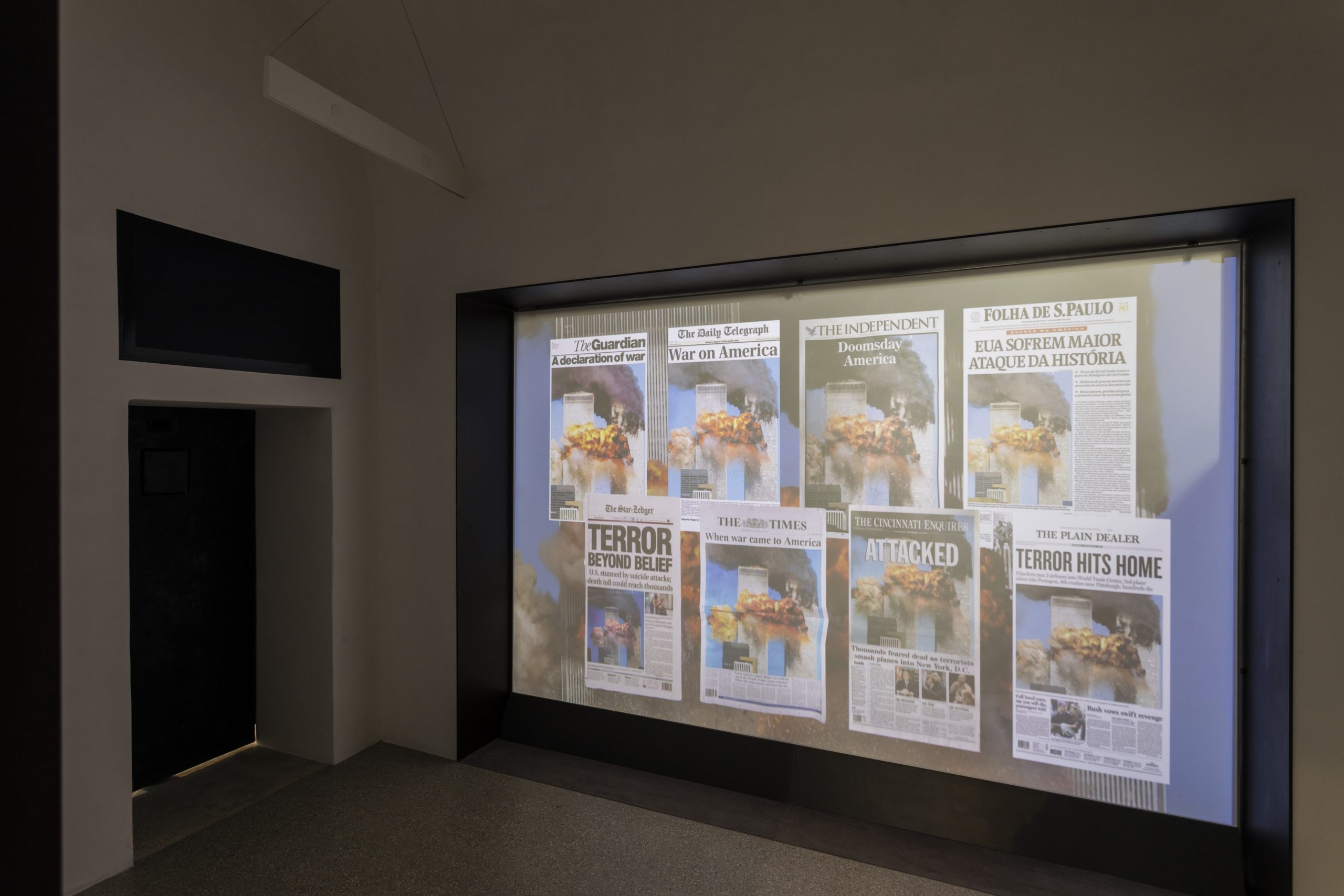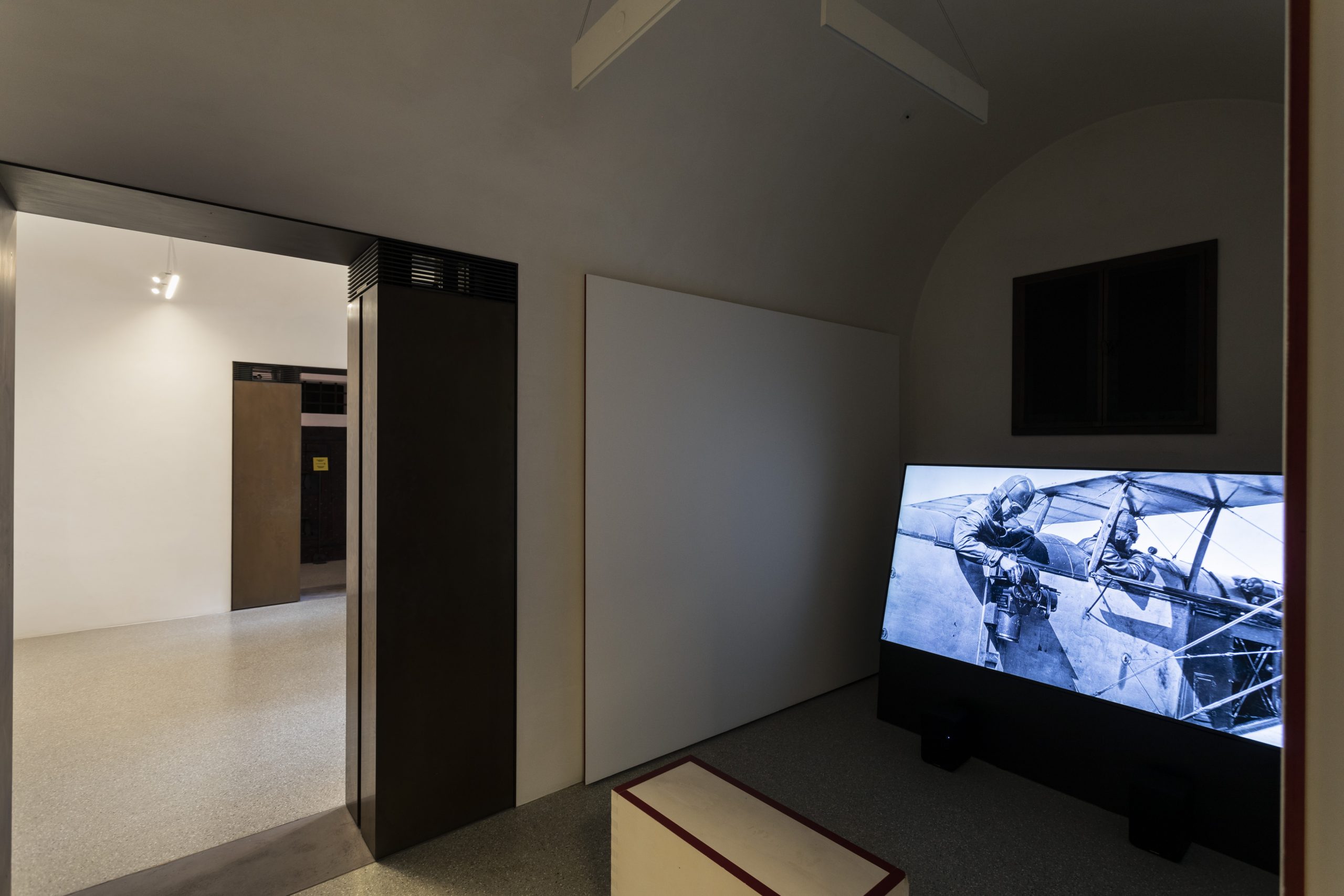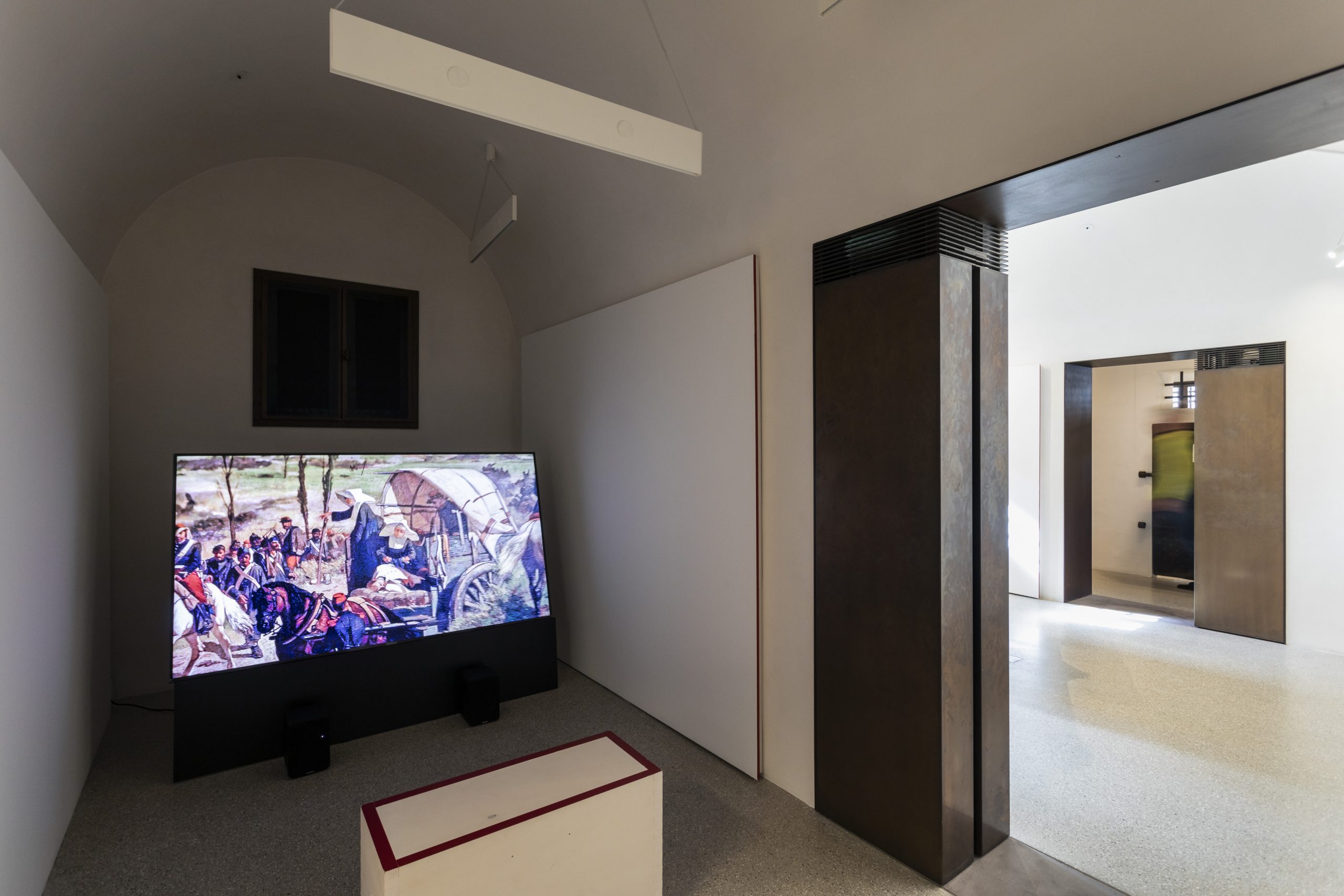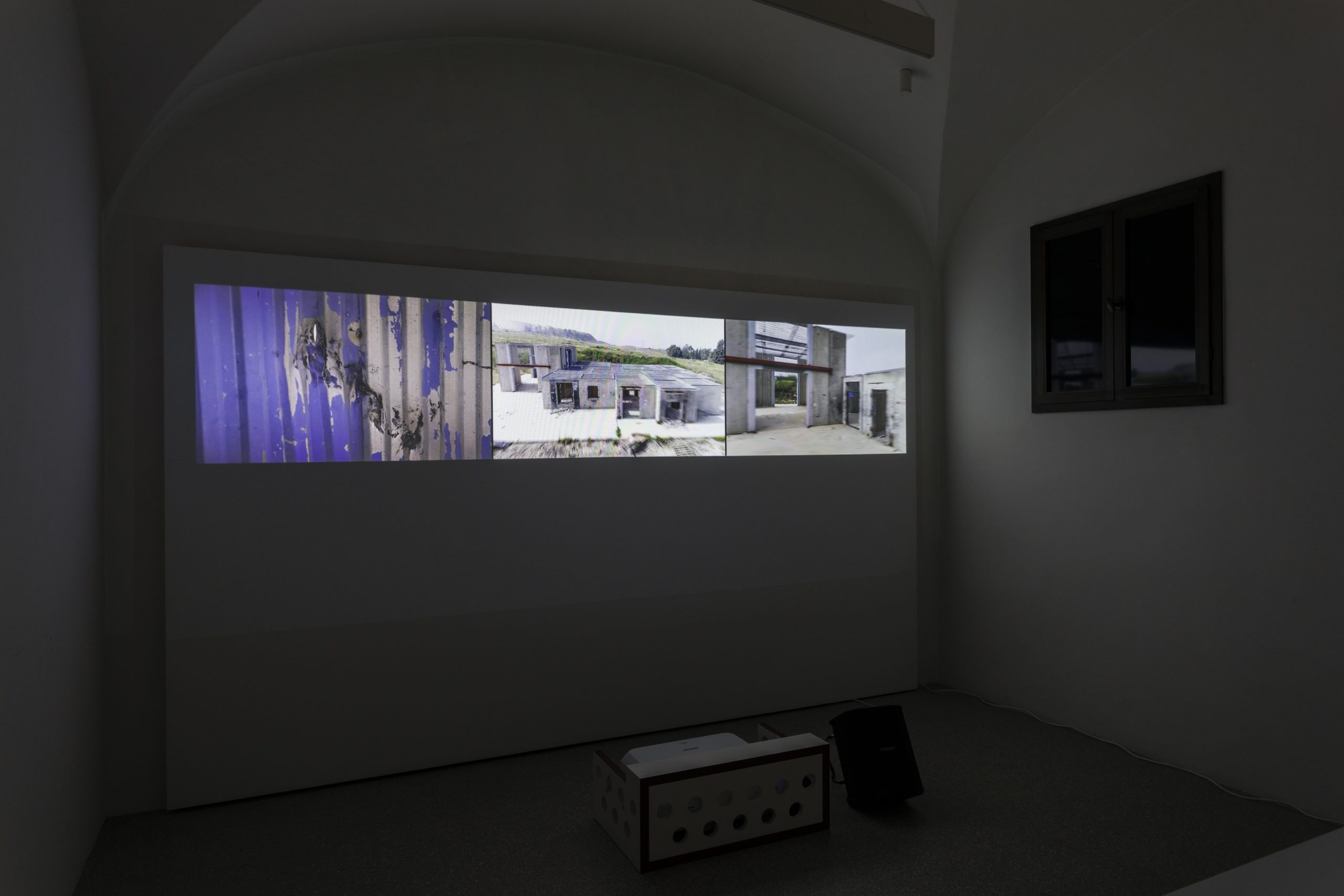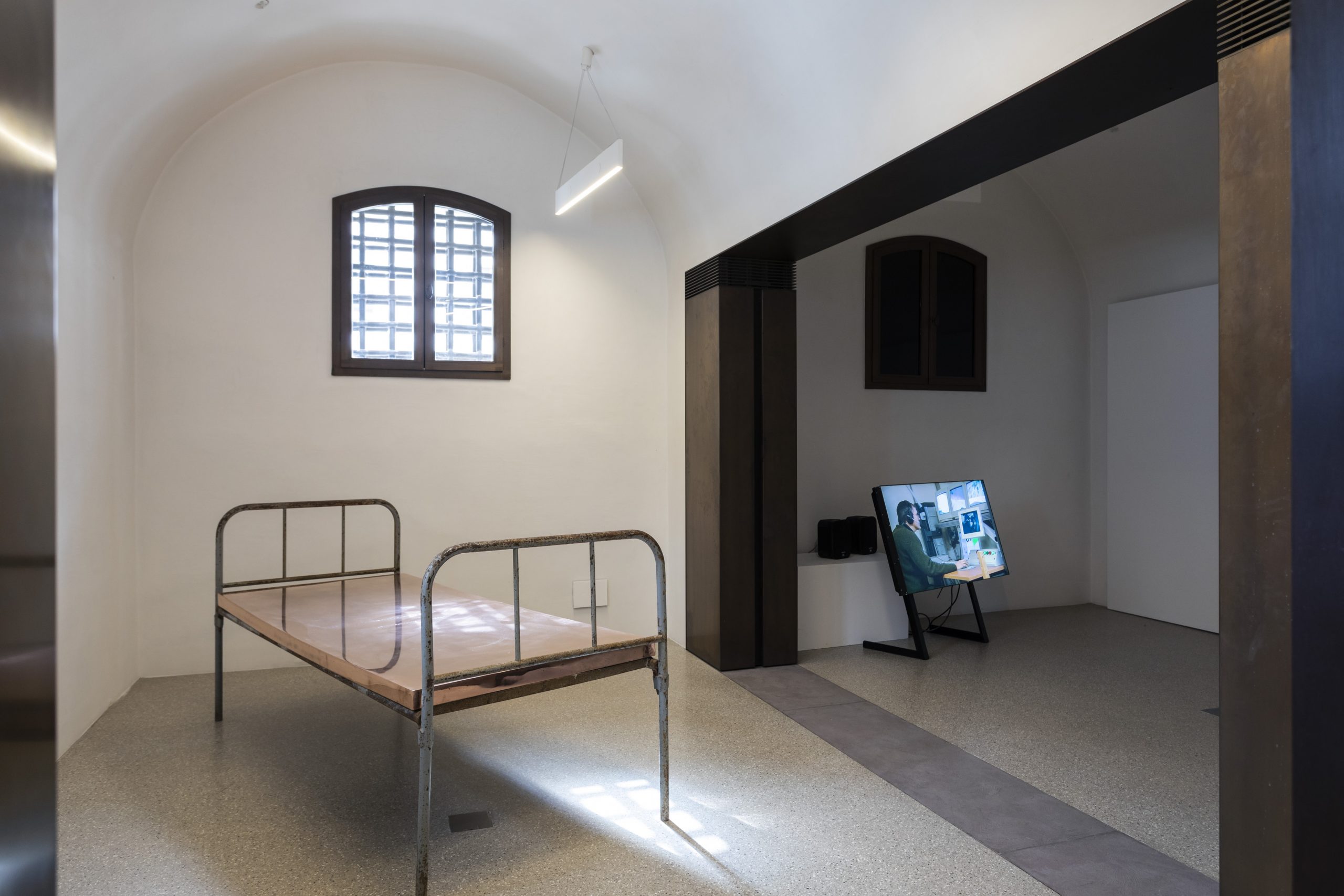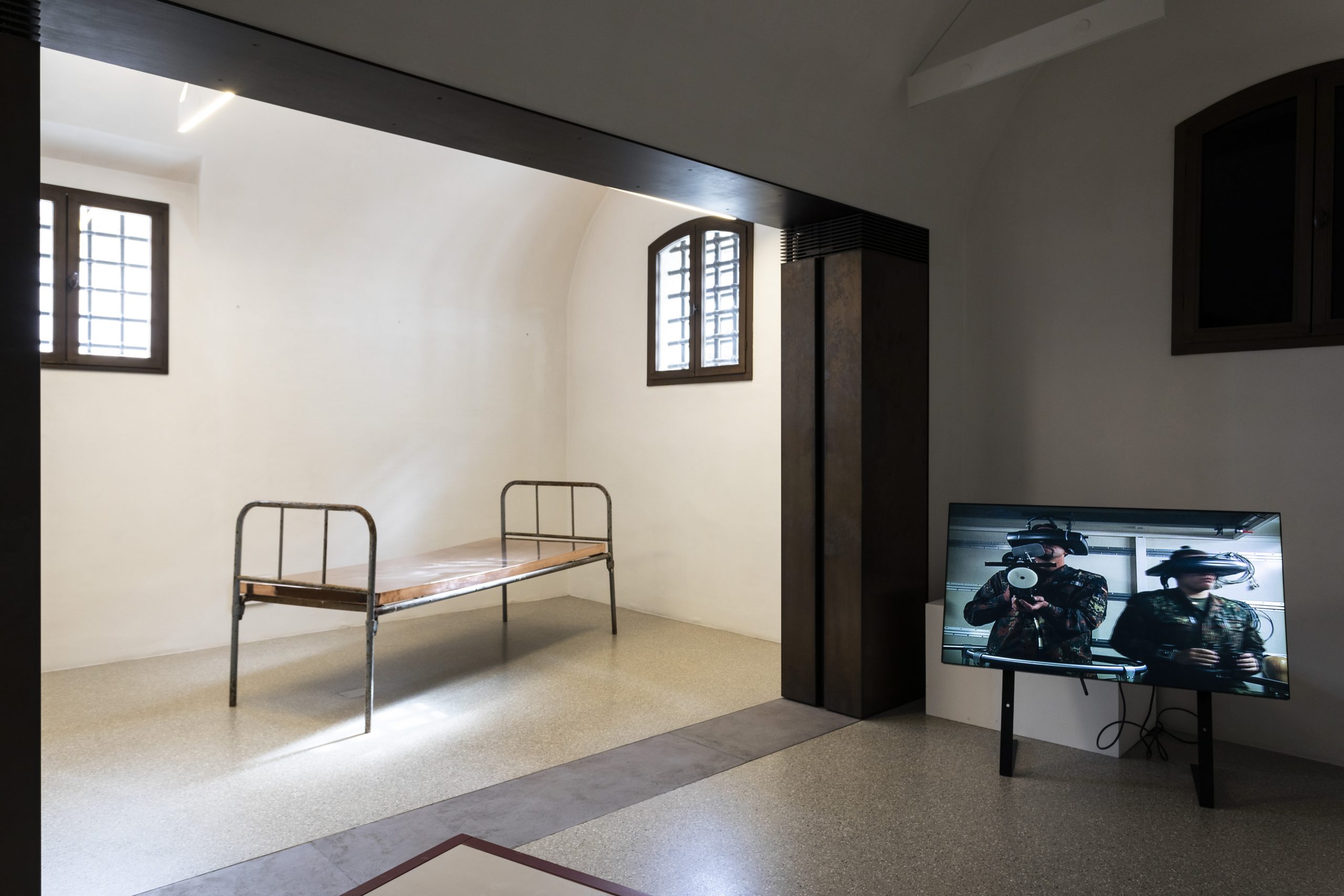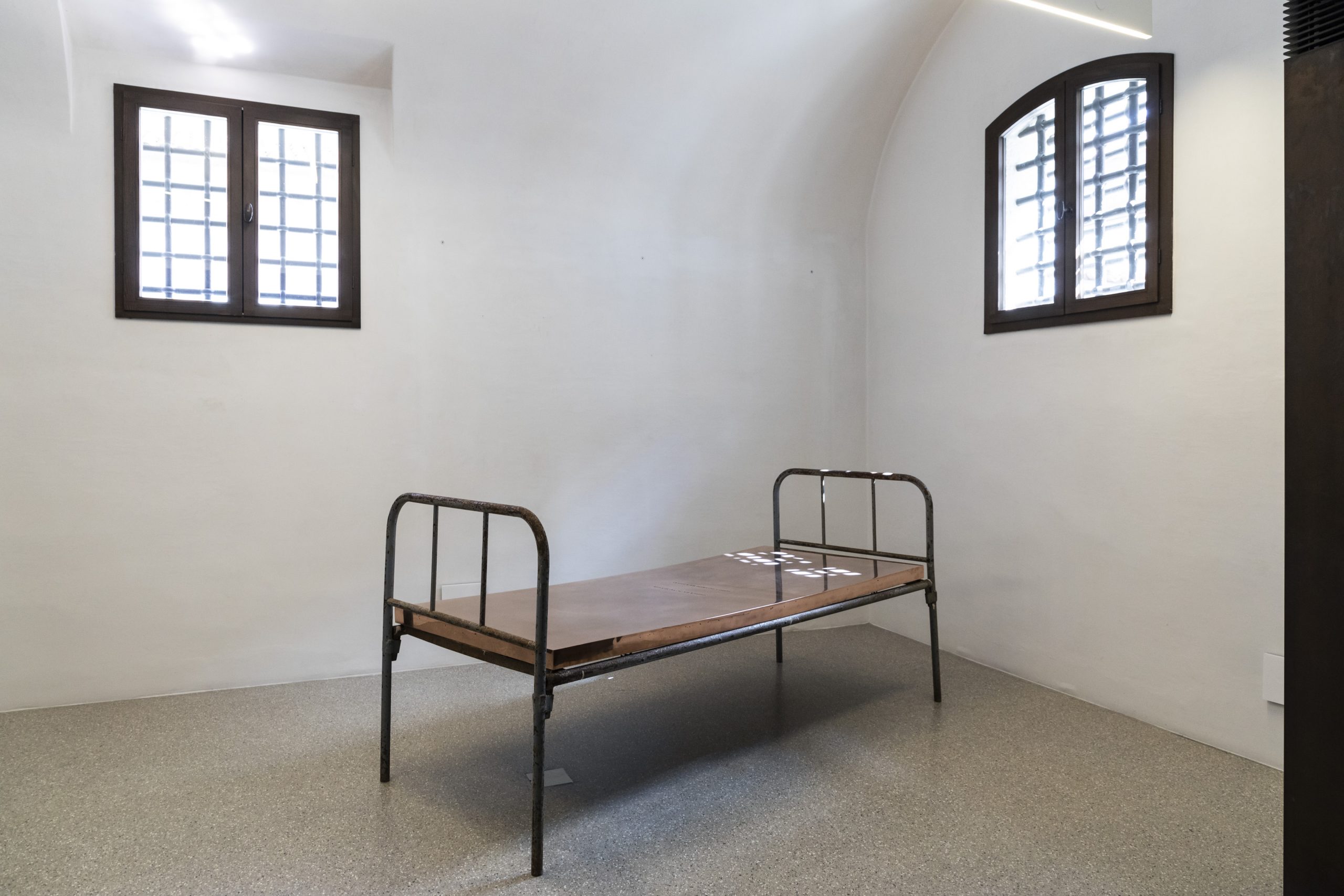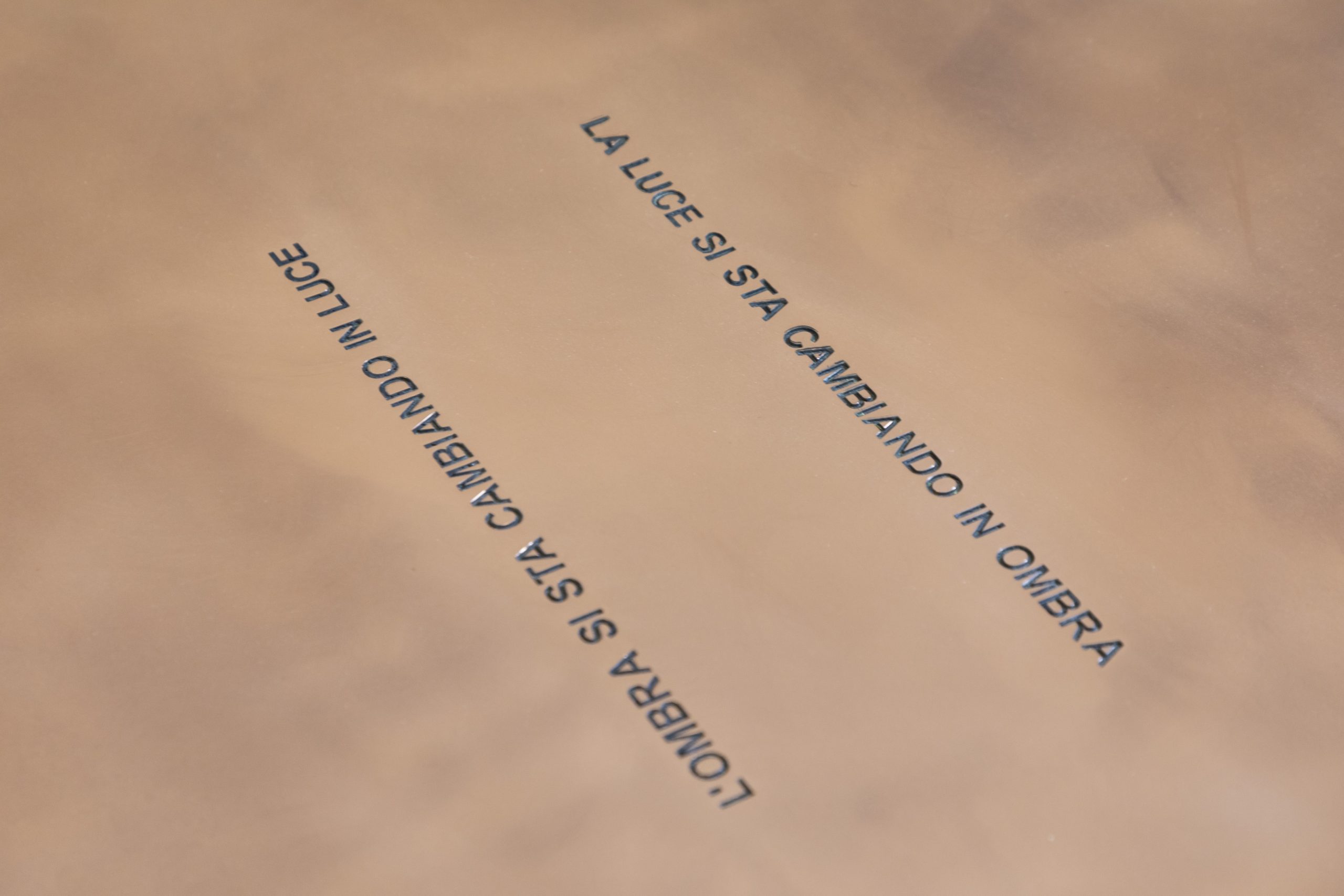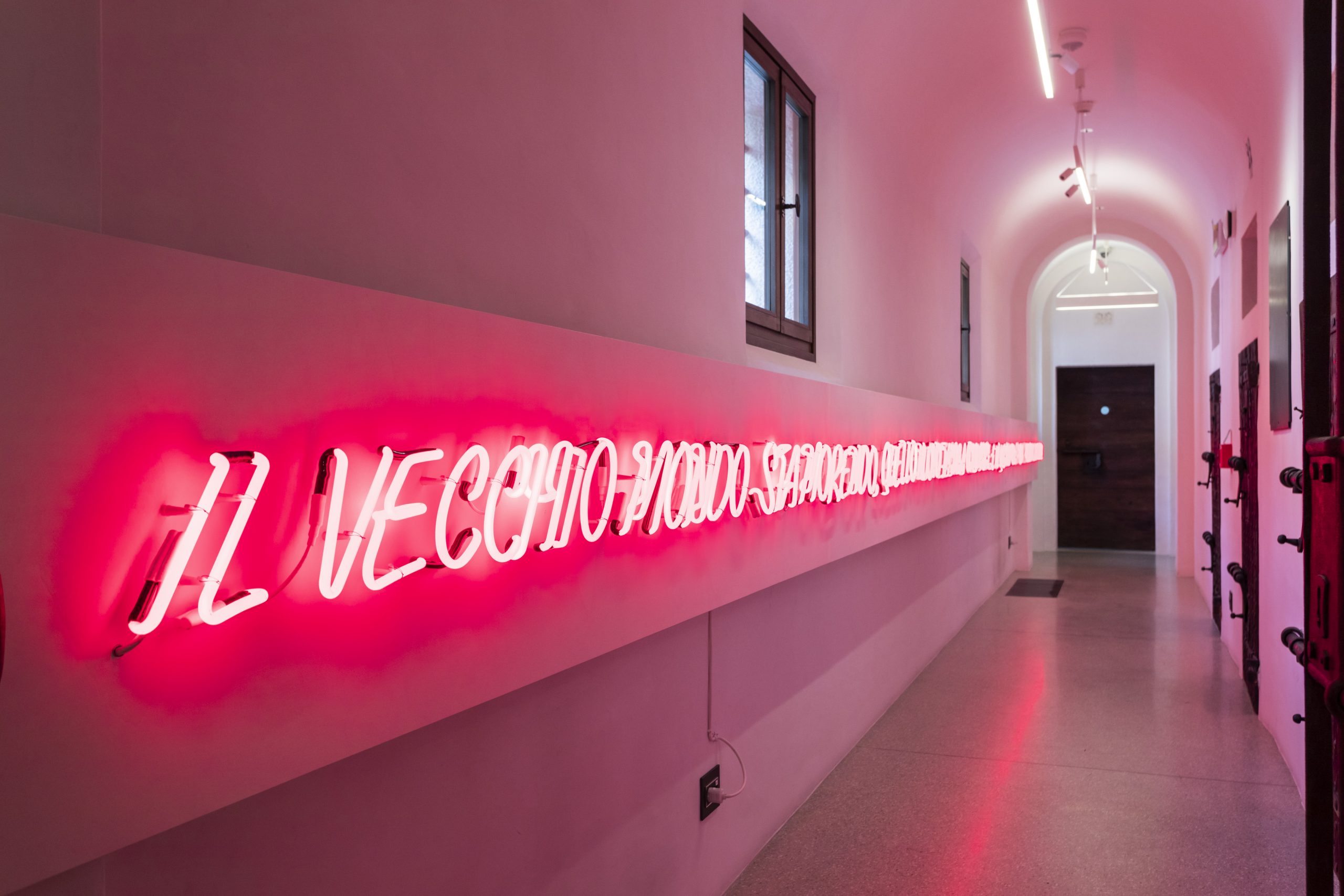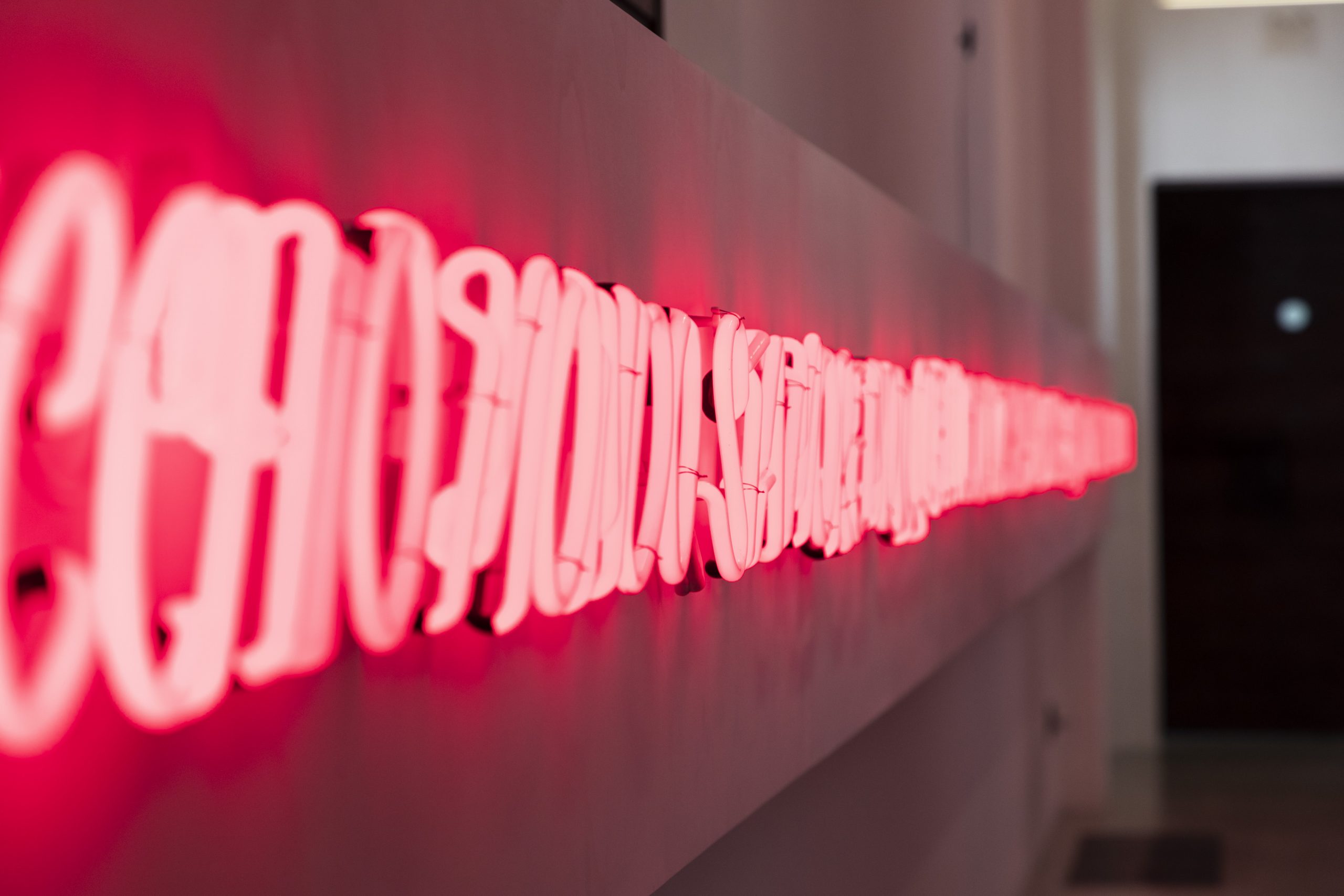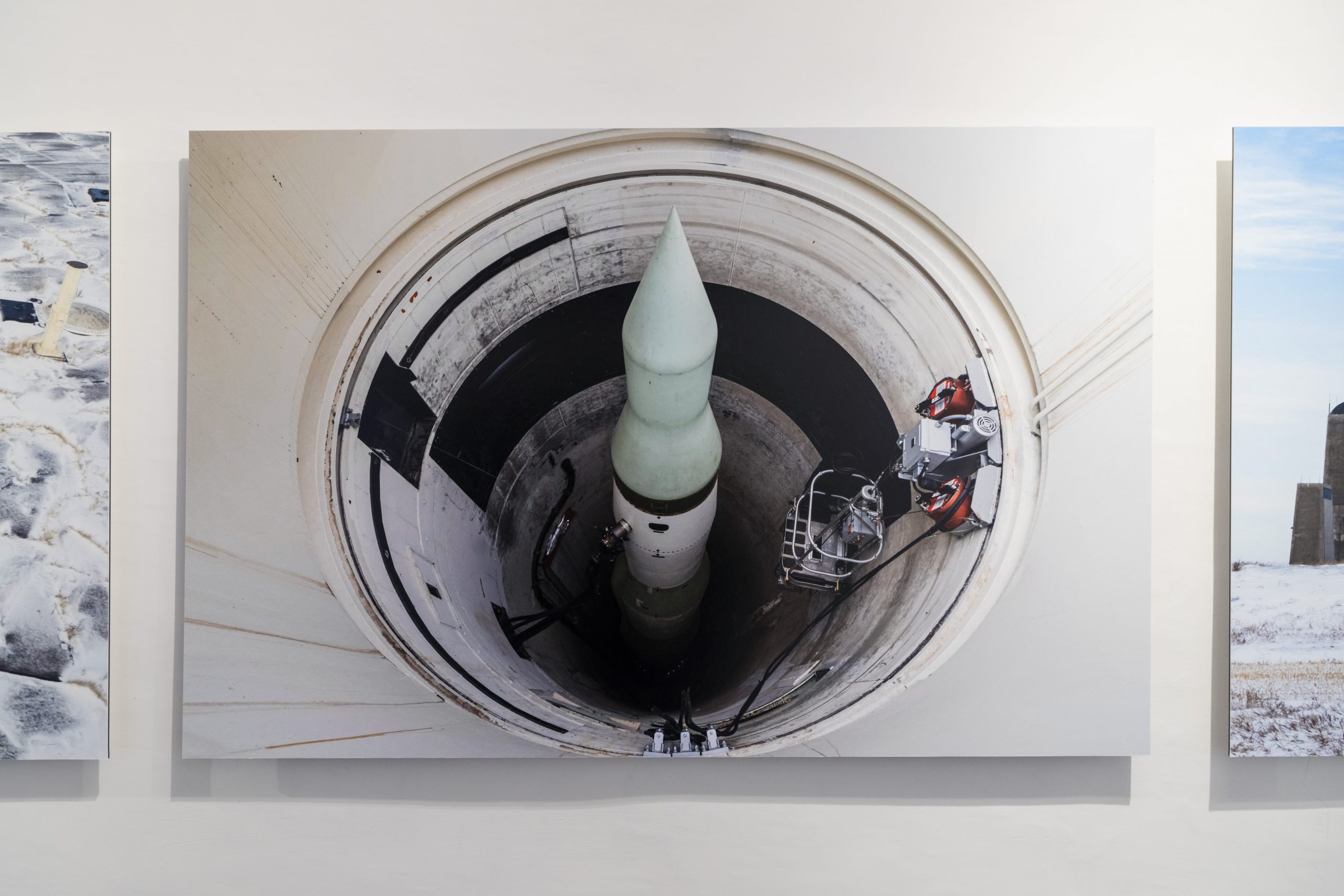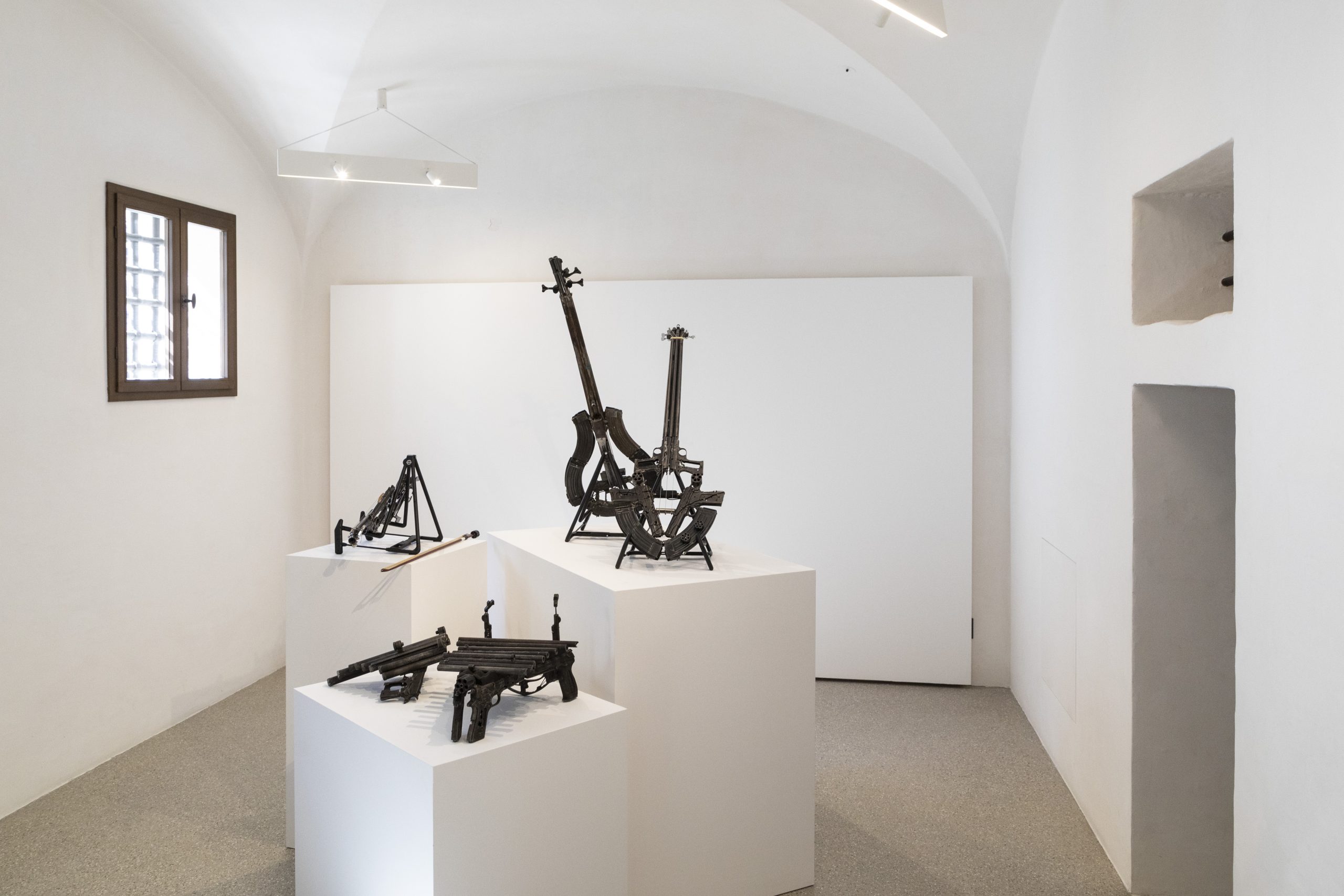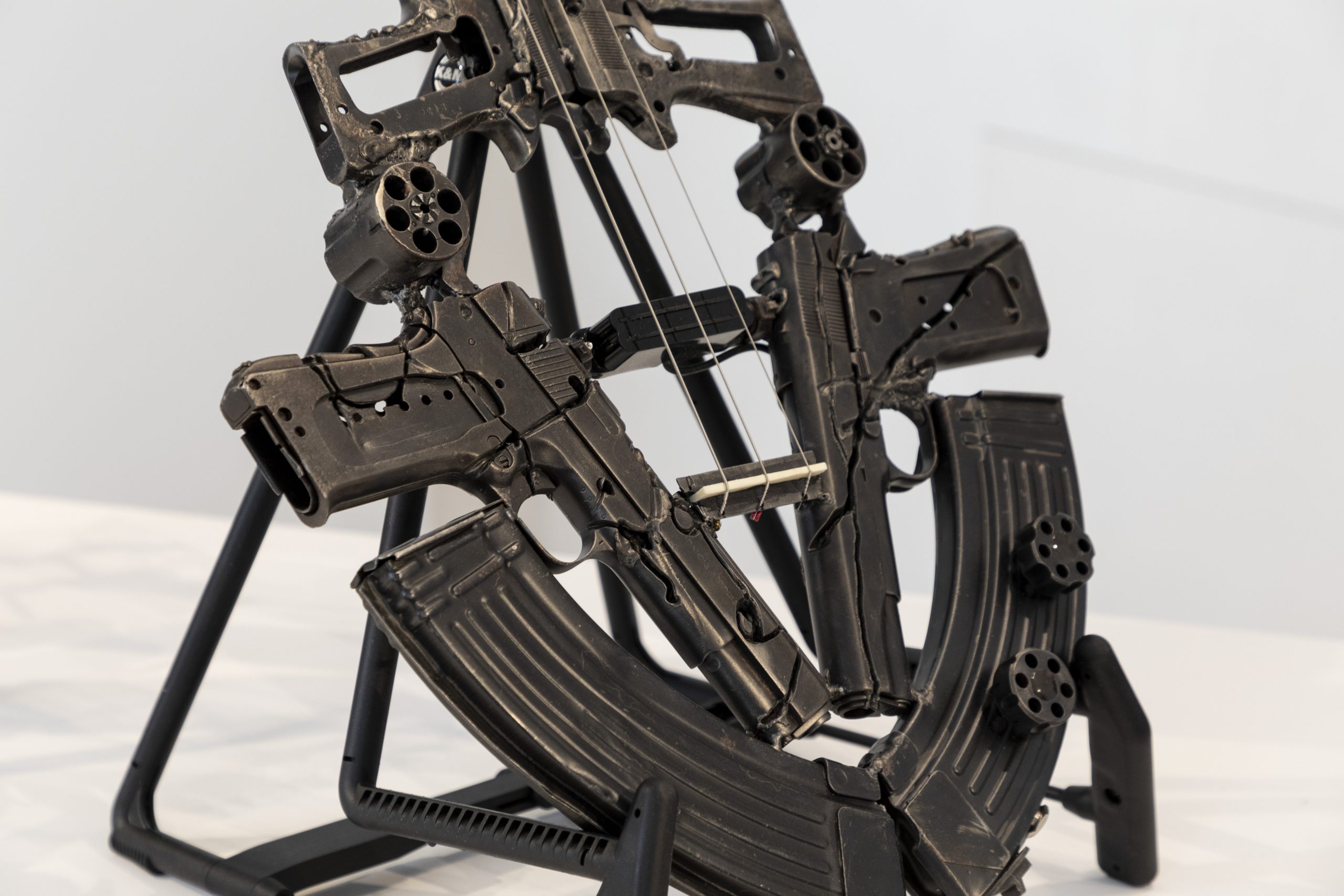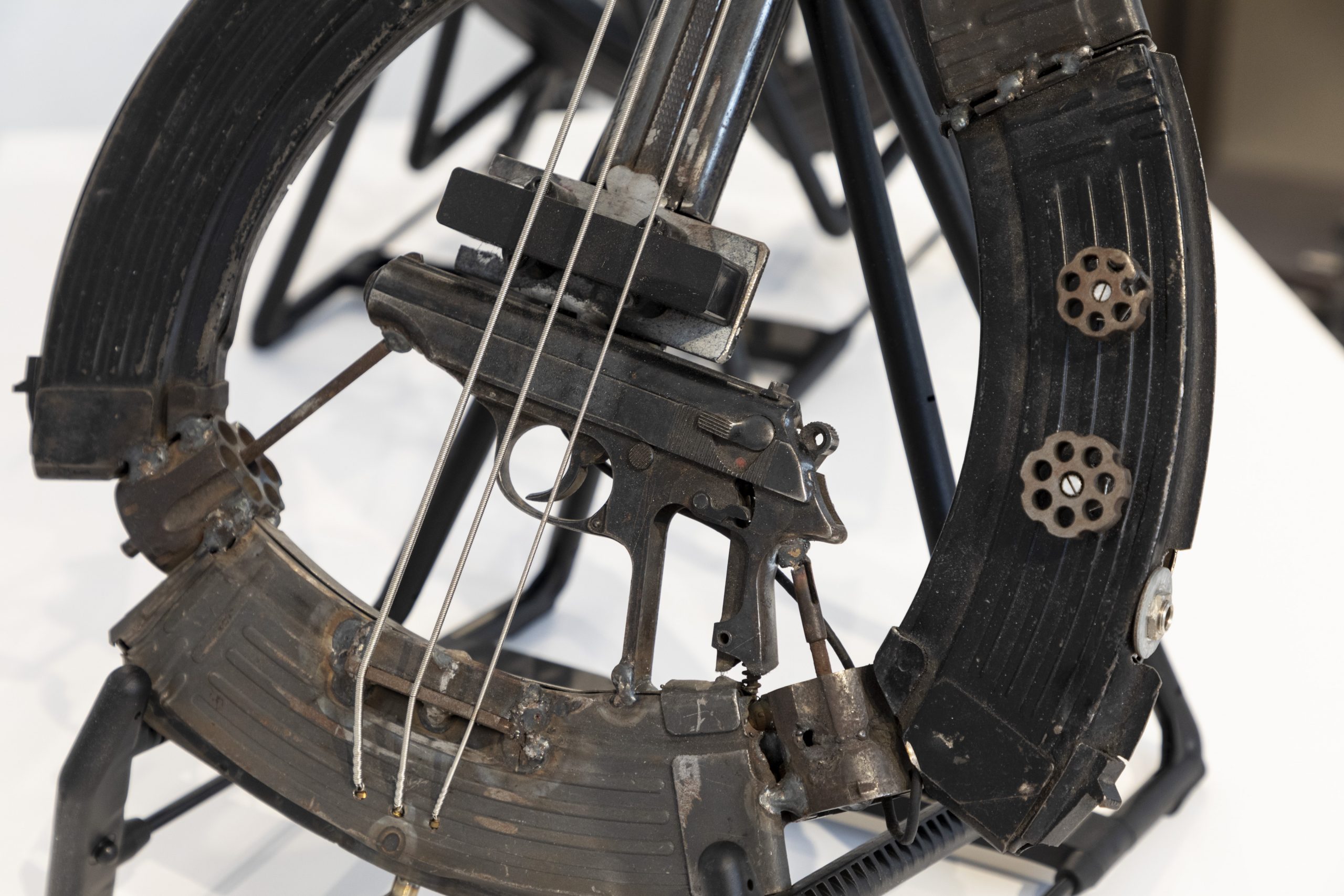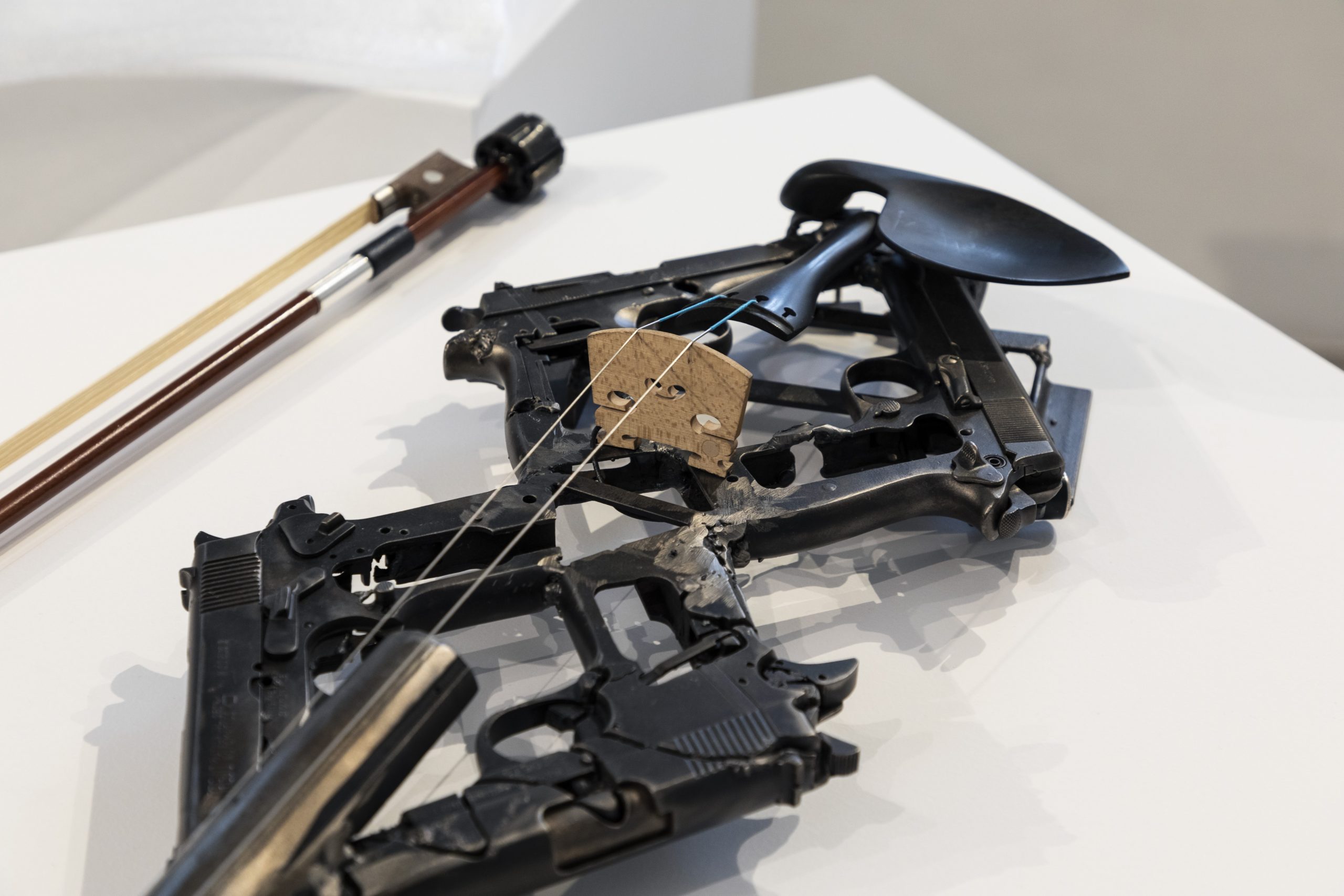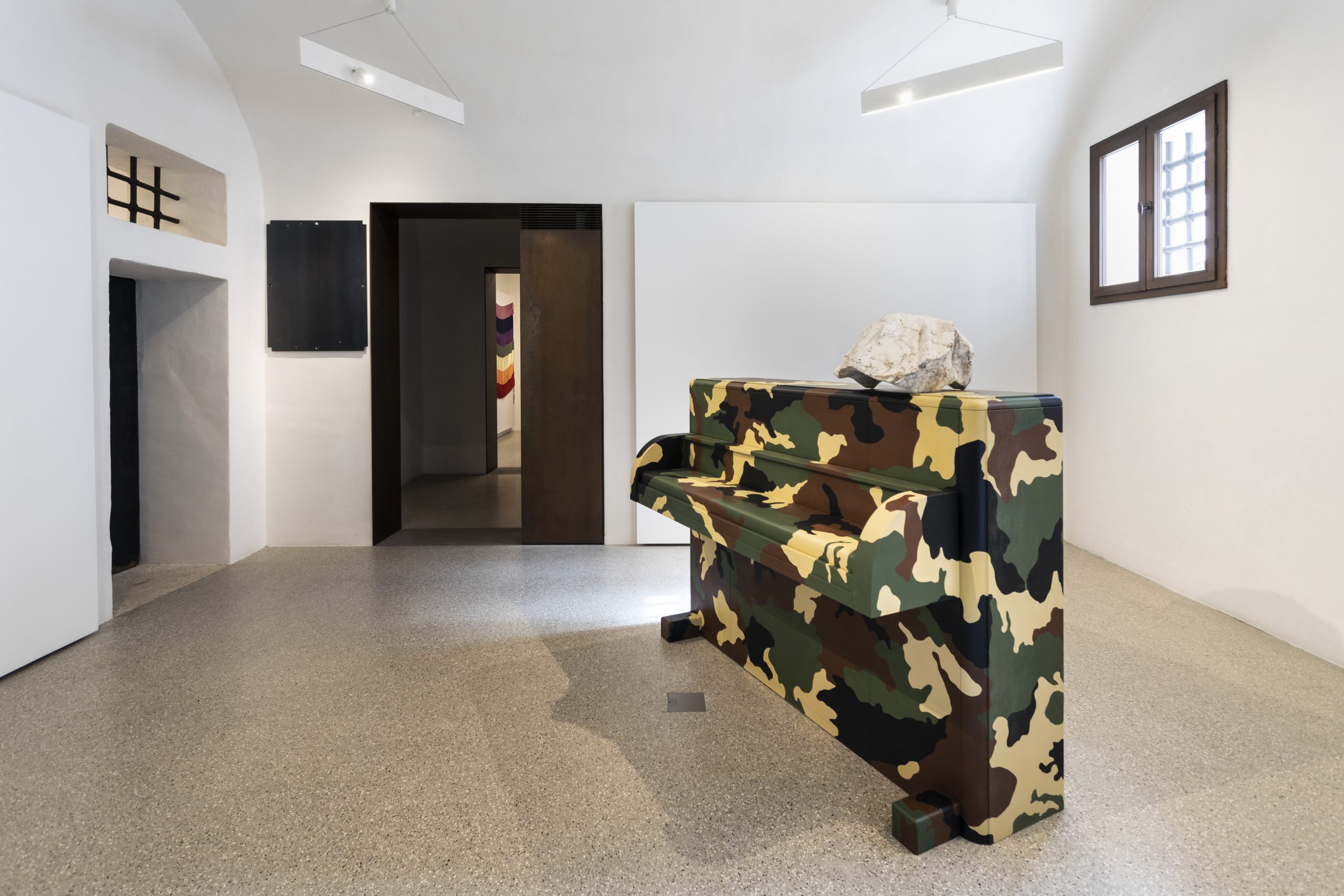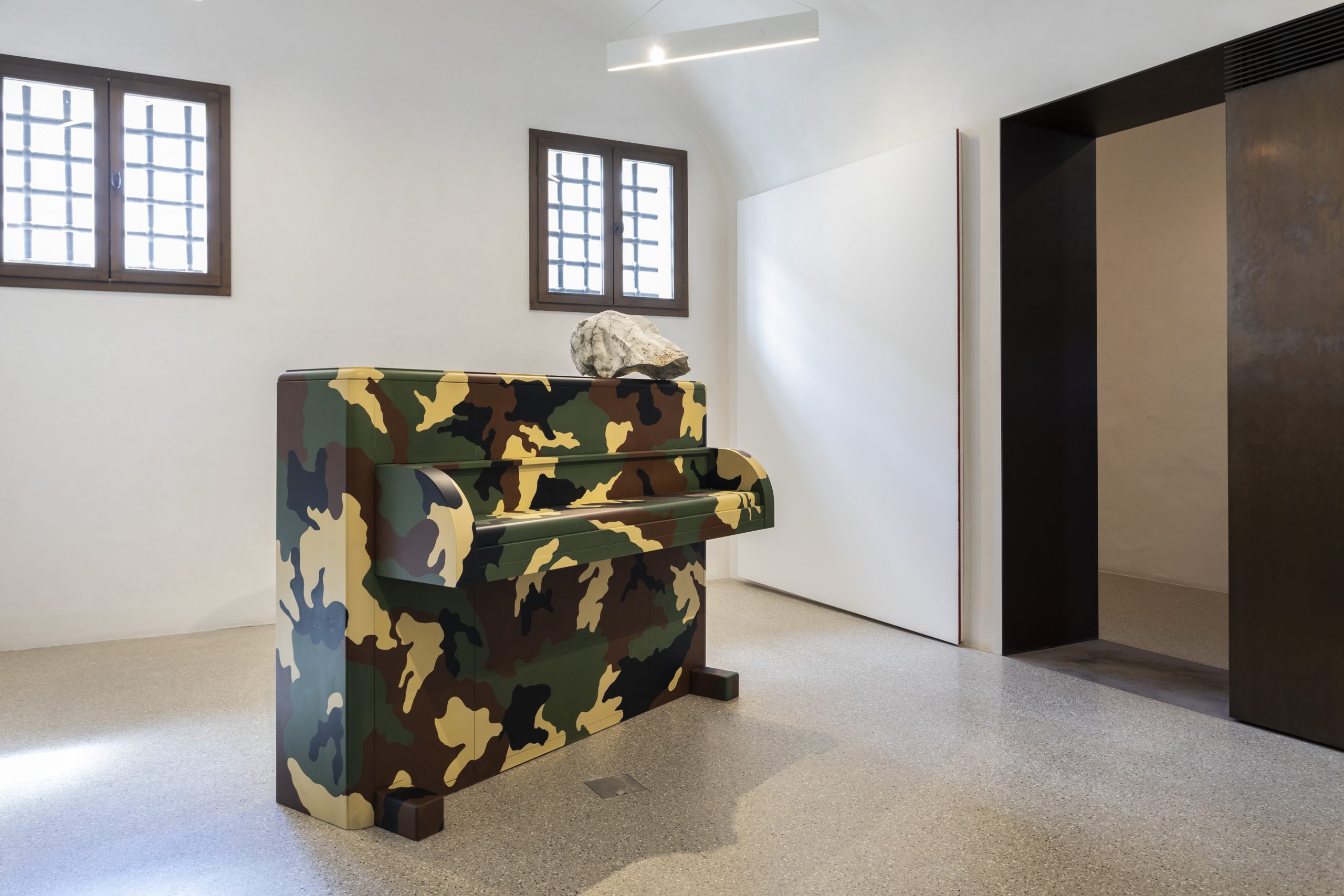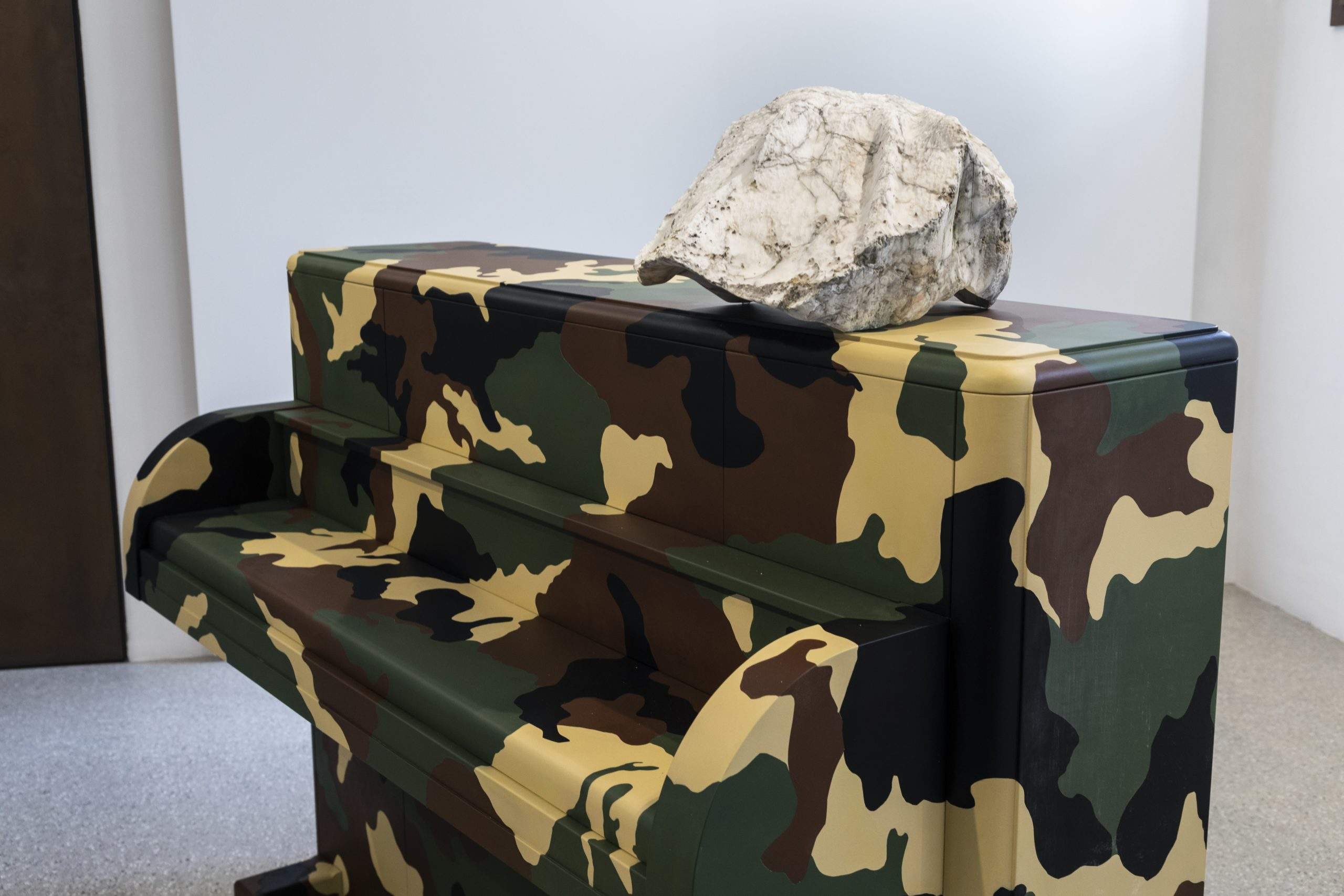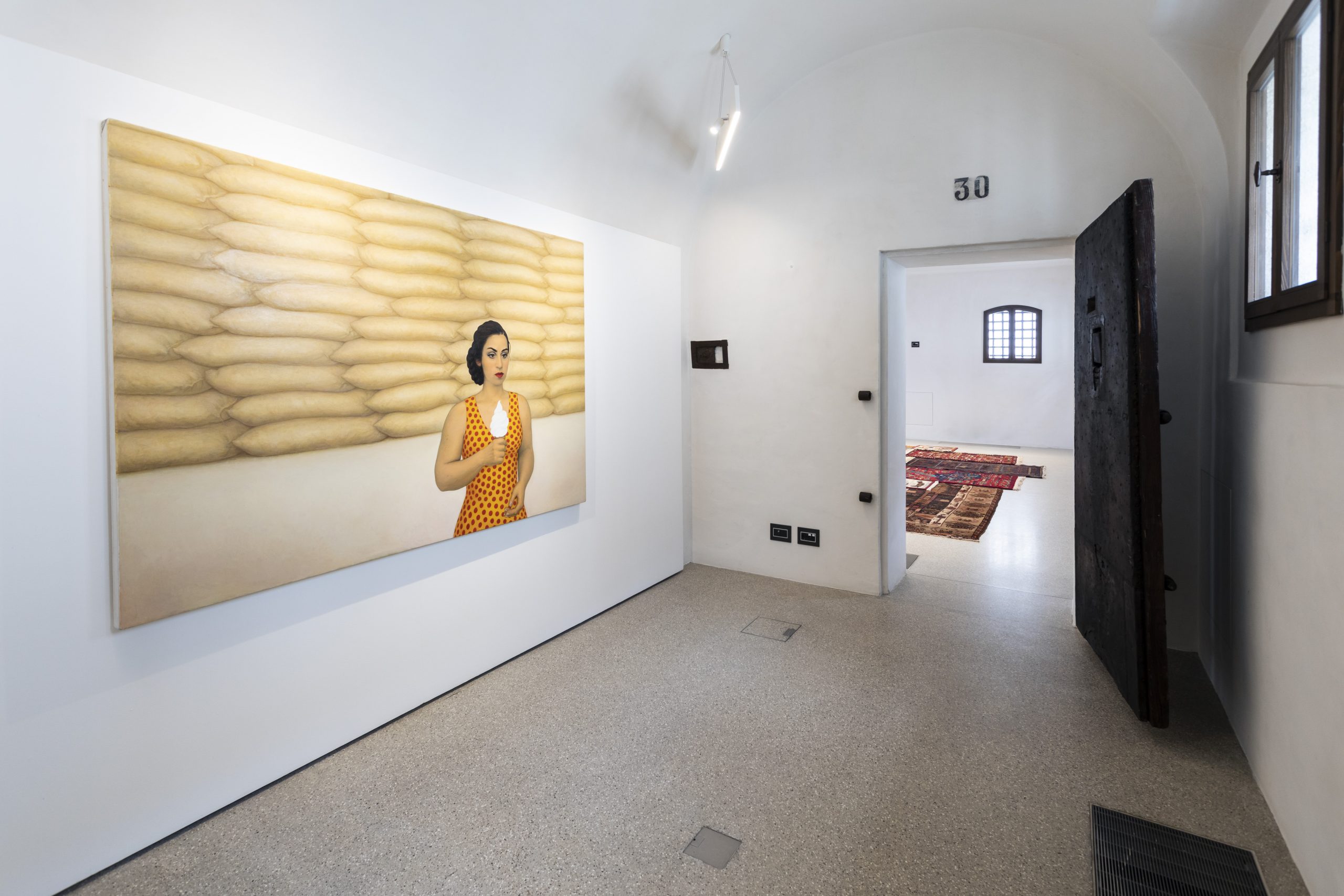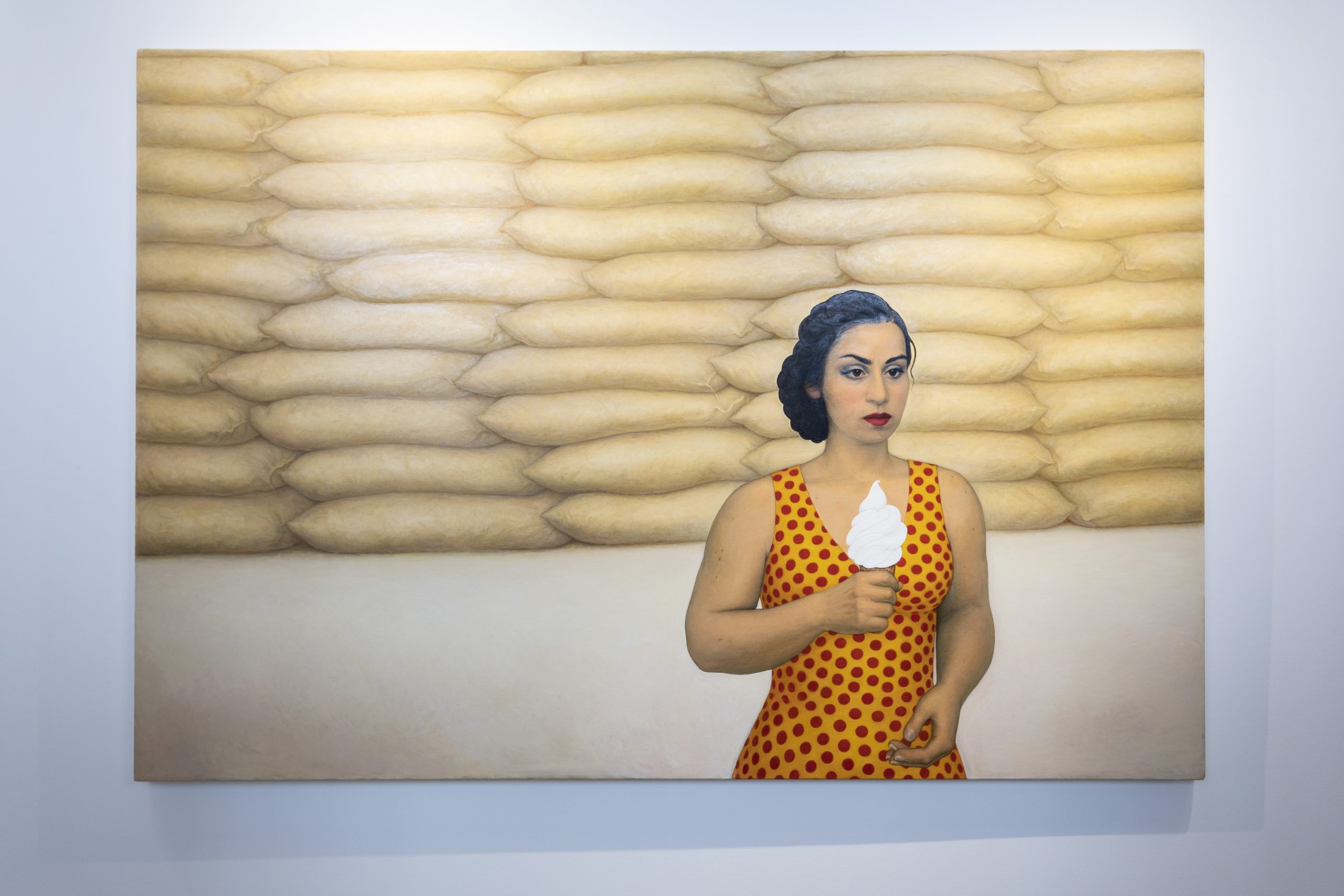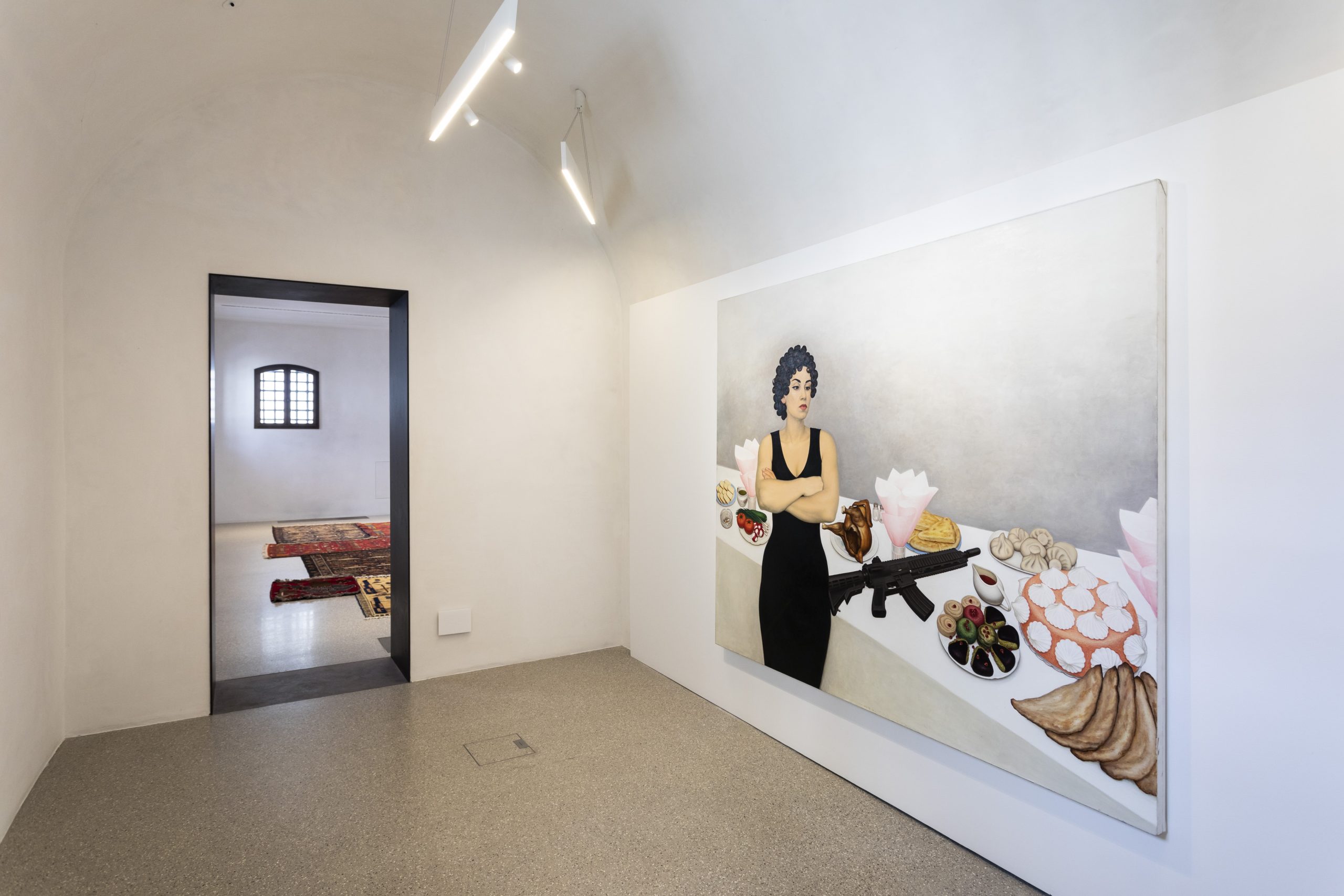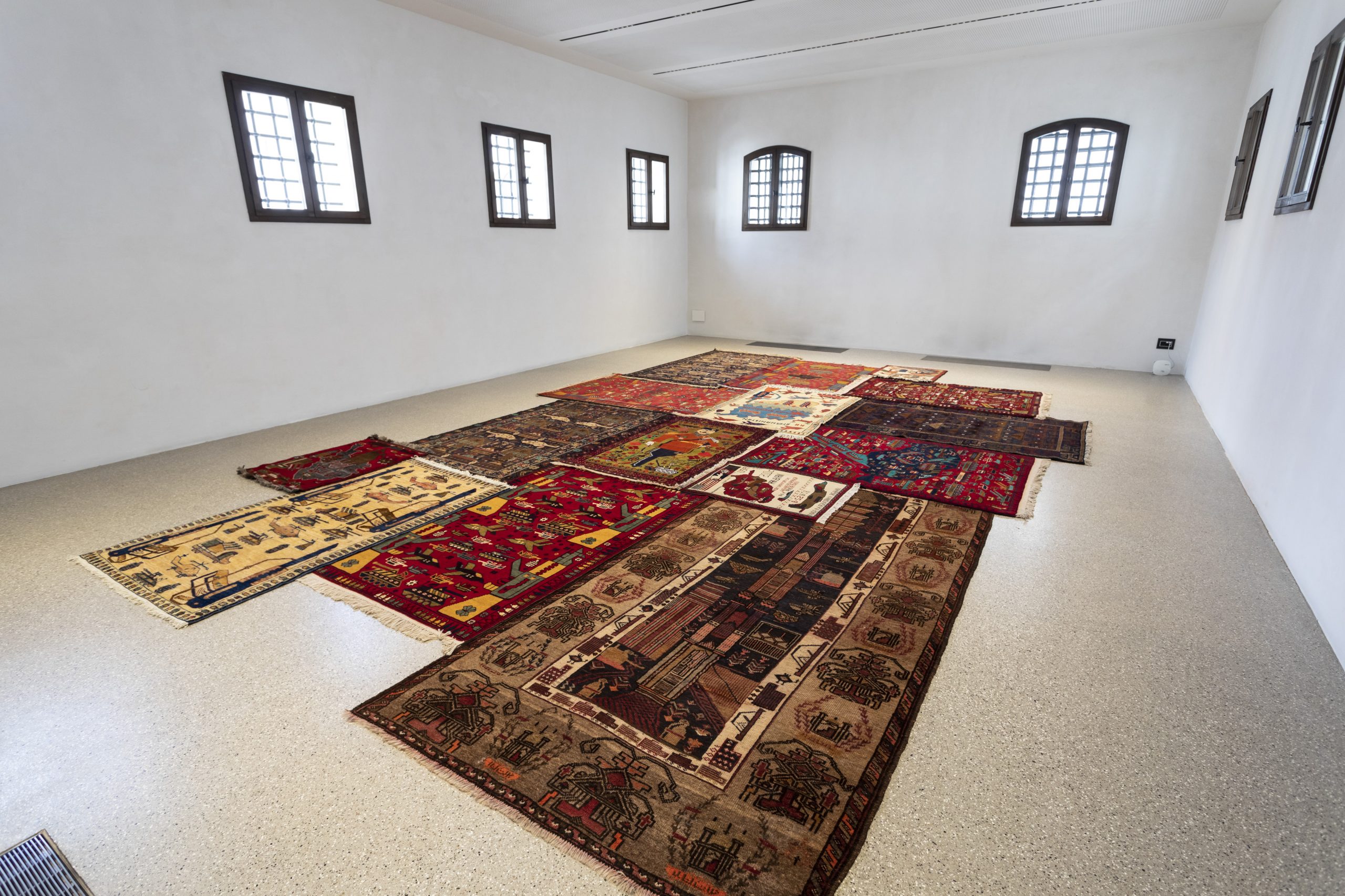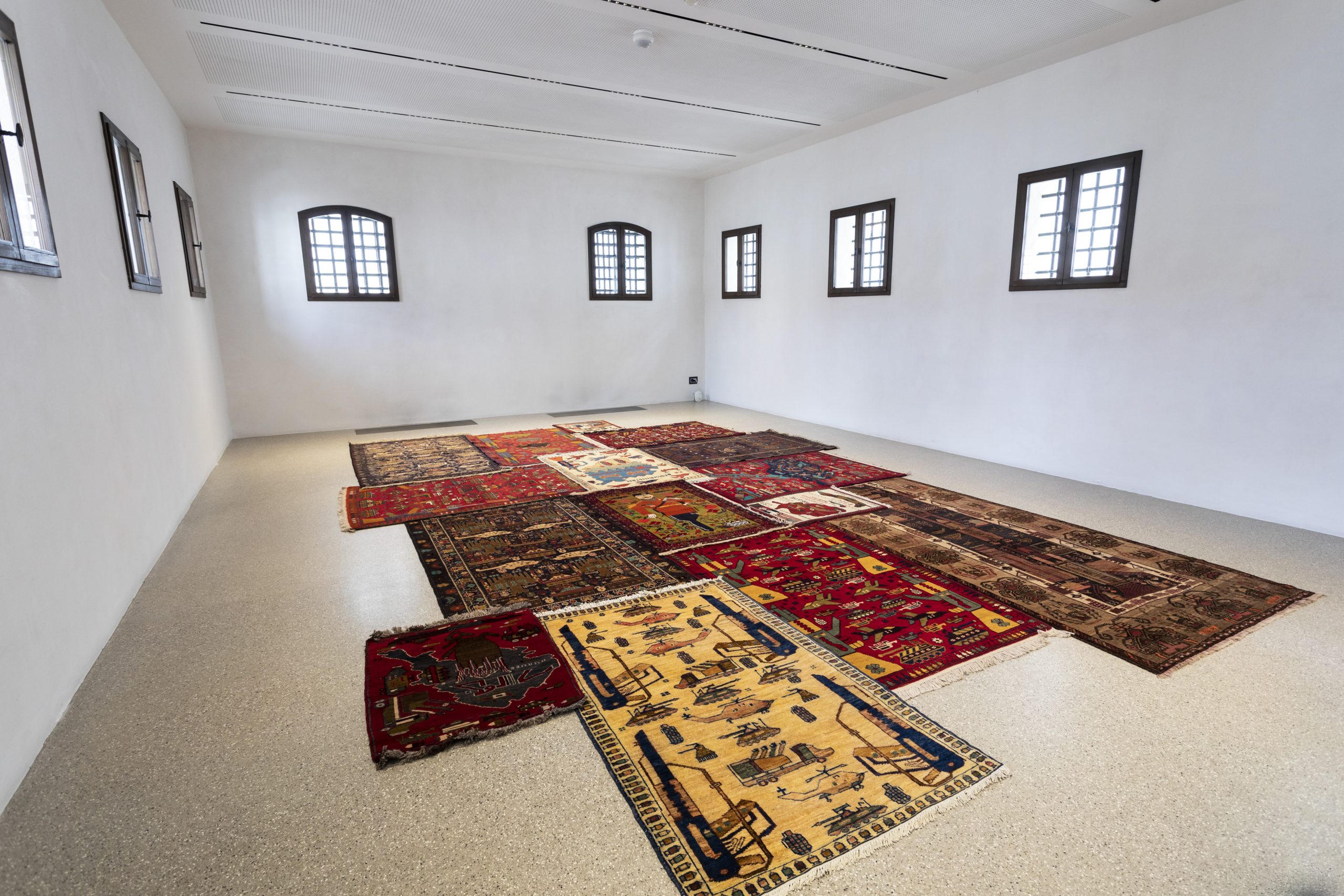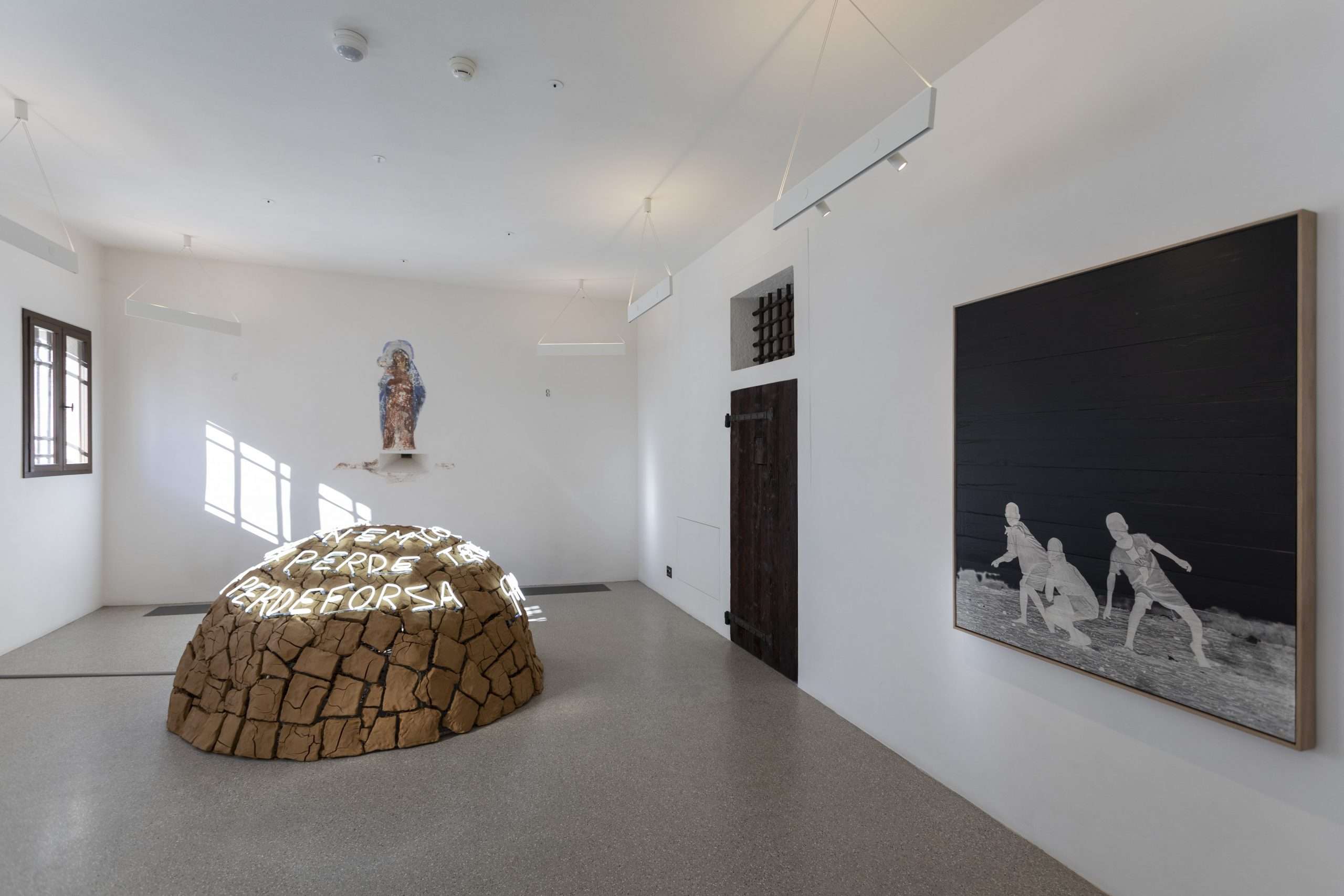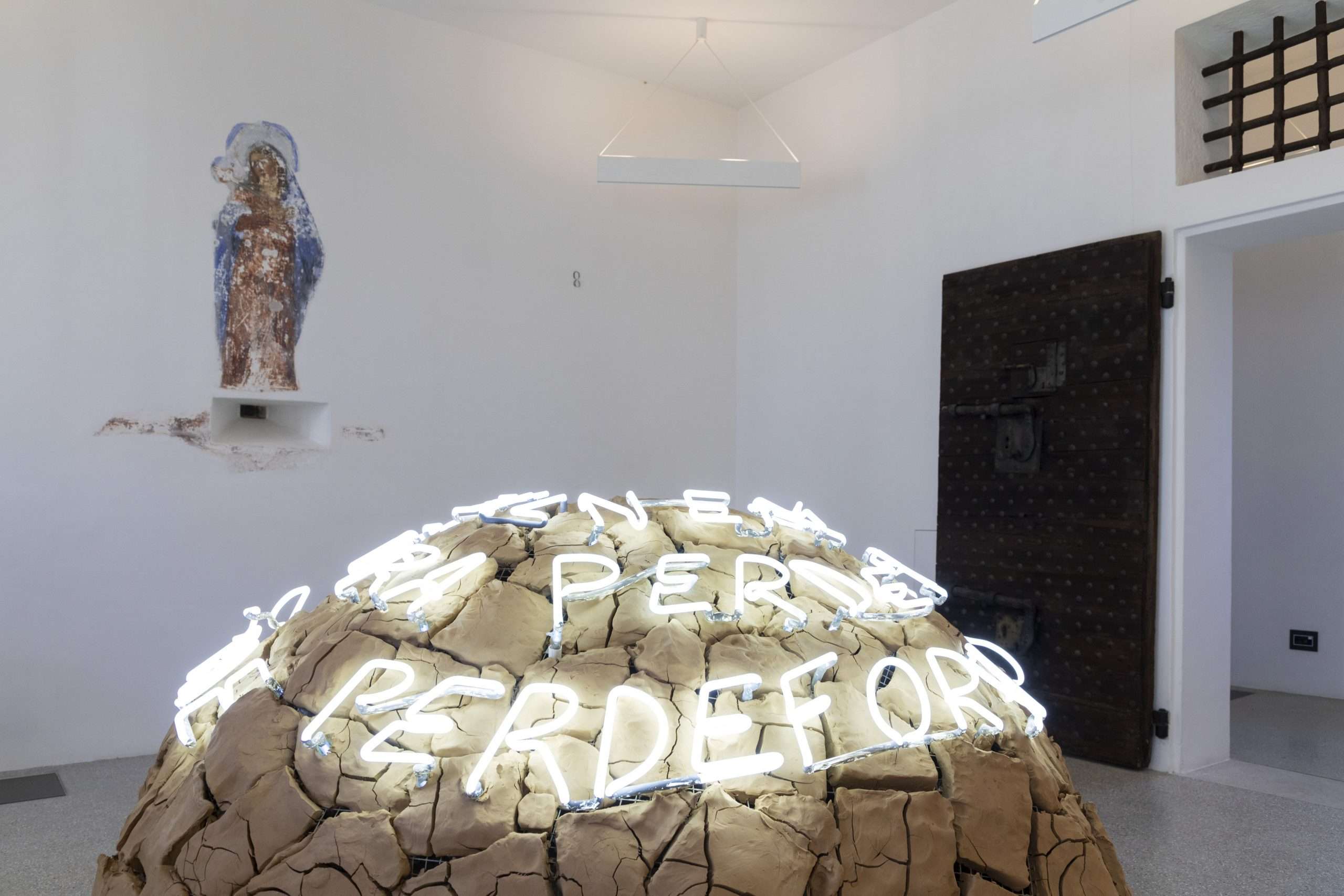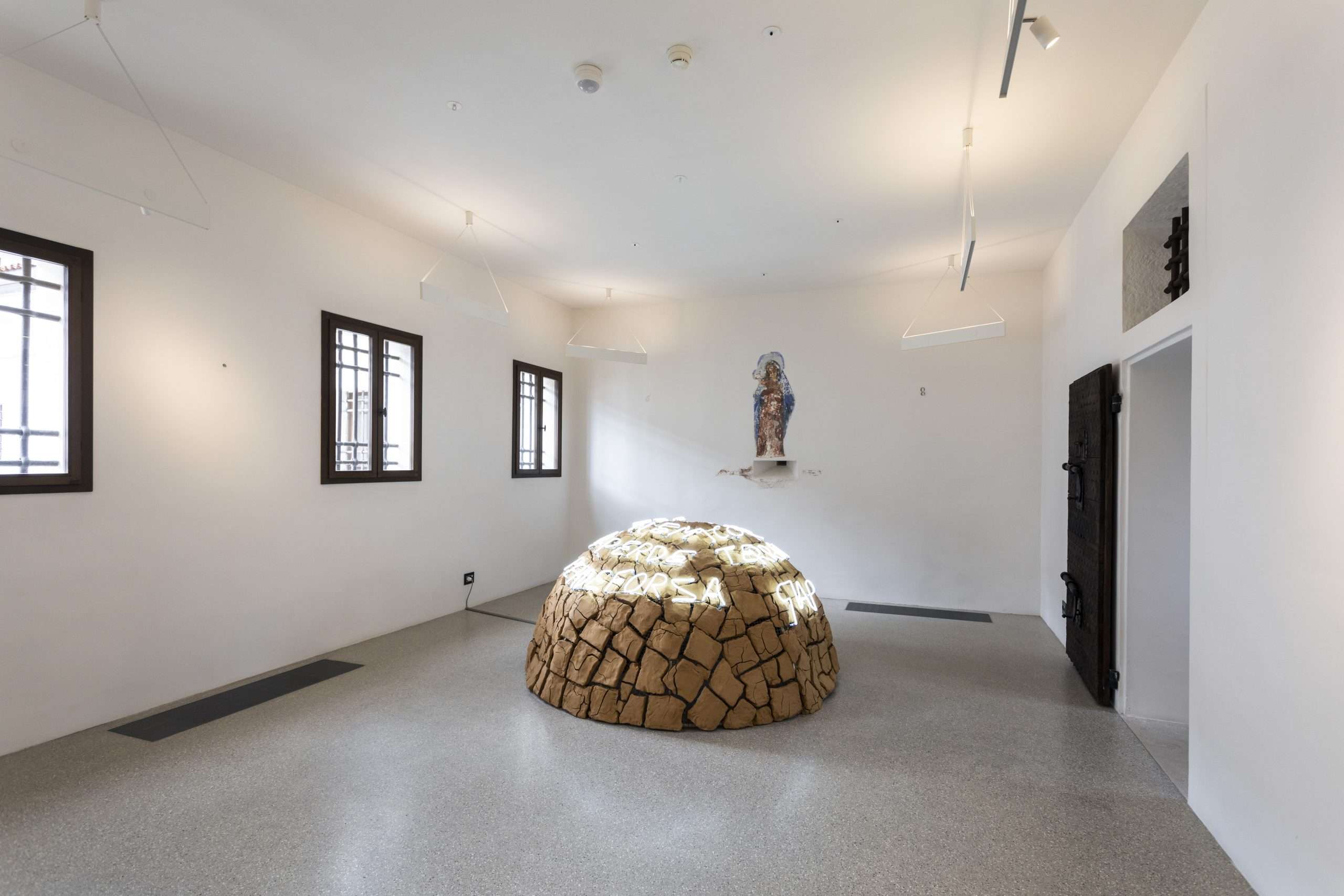
EXHIBITION
War is over! Peace has not yet begun
From Wednesday, April 5 to Sunday, September 17, 2023, Fondazione Imago Mundi presents the exhibition War is over! Peace has not yet begun at Gallerie delle Prigioni in Treviso.
Until the end of the exhibition, the new collection Art Theorema #3 and the installation Tessere la pace by Olimpia Biasi are on display on the second floor of the exhibition venue.
Curated by
Fondazione Imago Mundi
ARTISTS
VIDEO ESSAY
The exhibition features works by 15 artists: Francesco Arena, Terry Atkinson, Massimo Bartolini, Eteri Chkadua, Maxim Dondyuk, Harun Farocki, Leon Golub, Alfredo Jaar, JR, Mario Merz, Richard Mosse, Pedro Reyes, Martha Rosler, Sim Chi Yin, and Ran Slavin. War is over! Peace has not yet begun, through the selection of artists’ works, invites us to look at the apparently concluded conflicts of our time and of the past, and to reflect on the profound difference between the mere closing or deadlock of the armed phase of a conflict and the establishment of a true condition of peace, following a reflection on the power and meaning of images in the history of art and communication.
When a war ends, a long period of time begins which is usually far from media attention and which does not always result in real and lasting peace. In recent times we have seen this happen, for example, in Iraq and the Democratic Republic of the Congo, where tensions are now being rekindled after decades. From the moment the United States decided to “end the war,” has the violence in Afghanistan ceased? On our doorstep, the Russian invasion of Ukraine is even more indicative: the impossibility of reaching a compromise has stiffened the positions of the two sides in a front line that is always porous, but which has essentially been in stalemate for months.
War is over! Peace has not yet begun places at the centre of its research the fragility of a moment of transition in which an old system has fallen and another is about to arise: a chiaroscuro in which only decisions guided by dialogue can guarantee a future. The presence on show of the first flag of peace, created in 1961 by Aldo Capitini, founder of the Italian nonviolent movement, underlines the importance of those who work to build peace.
The exhibition opens with the works of Ukrainian photojournalist Maxim Dondyuk, who presents an immersive installation of the photographic series Culture of Confrontation, Ukraine ’22 and Between Life and Death. The photographs form an excursus that begins with the days of the Orange Revolution in the streets of Kyiv and takes us all the way to the current front of the conflict, to the trenches and bombed villages. Alongside Dondyuk’s unedited shots, a selection from Irish photographer Richard Mosse’s Infra series takes us to the forests of Democratic Republic of the Congo. Mosse, defying the categories of war journalism, documents the forgotten war in North Kivu, and with infrared film portrays landscapes and moments of daily life trapped in a ghastly humanitarian tragedy. The show continues with two works by Terry Atkinson that bear witness to the barbarity of wars in every era – today in Iraq as yesterday in Europe – and highlight the connections between economics and war.
Two video essays produced by Fondazione Imago Mundi and curated by Fulvia Strano and Francesco Spampinato comment on representations of war in art history and on how the technological evolution of photographic techniques has made reality and simulation ever more distant, changing the perception of war events. The research together traces a path that reflects on the importance of images in recounting war and in shaping the representation of the “winner” and of the “enemy”, showing how the narration of conflicts has often been entrusted to carefully constructed images.
The journey continues with the hope embodied by the first peace flag, made in 1961 and used in the Assisi peace march by Aldo Capitini and Maria Francesca Siciliani, and now kept in Perugia. This is followed by the work of Leon Golub, an American painter who in his long career has directly and mercilessly depicted the dynamics of power and violence over bodies. Harun Farocki and Martha Rosler, on the other hand, present works that reflect on the reception and understanding of the images that war creates.
Rosler’s photomontages, echoing her historic Bringing the War Home series made during the Vietnam War, discuss the 2003 U.S. invasion of Iraq, and reveal how much the collective understanding of war is shaped and influenced by the media. Farocki’s documentary video reflects on the relationships between the act of seeing and the act of representing, between the capitalist economy and war, demonstrating how technology has made the classical conceptions of seeing and creating images obsolete. However, the works on display do not only focus on scenarios from active conflict, but, as in Ran Slavin’s video, also military training camps, now abandoned with their ruins and debris. Slavin contrasts this moon-like and desolate landscape with footage of a naked female body, as if to emphasise how both the land and the female body are victims of men’s wars.
Francesco Arena’s work, which recycles an old bed from a prison, shows excerpts of the regimented life of soldiers and prisoners alike. In the corridor we pass alongside Alfredo Jaar’s neon work that quotes Gramsci and suggests how wars are born in those moments of bewilderment and transition between an old world we must leave and a new one we have yet to build.
This new world should finally be free of nuclear weapons, as portrayed by Sim Chi Yin’s shots in a journey that takes us from North Korean to U.S. nuclear missile bases. Mexican artist Pedro Reyes presents the video Under the Cloud, which takes us to the testing grounds of nuclear bombs, while with the series Disarm he makes a gesture of demilitaris ation, transforming weapons seized by the Mexican government from drug traffickers into musical instruments. Massimo Bartolini remains in the musical dimension with his reconstruction of the piano that American armies used to carry during their military campaigns. An element at the centre of sociality, the piano was a tool to raise the morale of the troops at the front, thus becoming an indirect instrument of war.
Finally, paintings by Georgian artist Eteri Chkadua take us into the everyday dimension of life in war with its consequences and repercussions both psychological and material. This is followed by the display of a series of Afghan war carpets reproducing the weapons of the many conflicts that have marred that land.
On the second floor we find the first igloo made by Mario Merz, Igloo di Giap, where the phrase of the Vietnamese general Giap is written on a clay hemisphere: “If the enemy concentrates, it loses ground; if it disperses, it loses strength,” which, in Merz’s view, changes from a military strategy into a reflection on the flow of energies.
Finally, a recent work by JR concludes the itinerary, which features negative photographic prints on wood of war refugee children in a free and hopeful race toward the future.
On the second floor you can also visit the new collection Art Theorema #3, curated by Claudio Scorretti, Irina Ungureanu and Francesca Valente. This new collection comprises 198 works created by 170 artists from over 80 countries in the 10x12cm format, a hallmark of Imago Mundi Collection. It is a project born before Covid, and concluded a few months after outbreak of the war in Ukraine.
This collection of works reflects on the concept of crisis, in conversation with the theme of current exhibition; crisis understood as a decisive moment of charge, and therefore understood in a positive way.
Also on the second floor we can find Tessere la pace by Olimpia Biasi. This artwork restores in visual form the theme of crisis as change. Using multi-material collages on gauze, this work represents a weaving the ideally seeks to recompose relationships and heal wounds.
Olimpia Biasi, born in the Treviso area in Italy, was educated in Venice where she learnt from the masters of Spatialism: Bacci and Gaspari. She has tried different languages and techniques, while remaining faithful to a naturalistic expressionist and narrative poetic, at the crossroads between figuration and metaphysical abstraction. Since 1972, she has exhibited in more than 70 solo exhibitions in Italy and abroad. She is featured with two artworks in the Imago Mundi Collection Art Theorema #3.
PHOTO CREDITS
© Marco Pavan
April 5 - September 17, 2023
Gallerie delle Prigioni - Treviso
Curated by
Fondazione Imago Mundi























